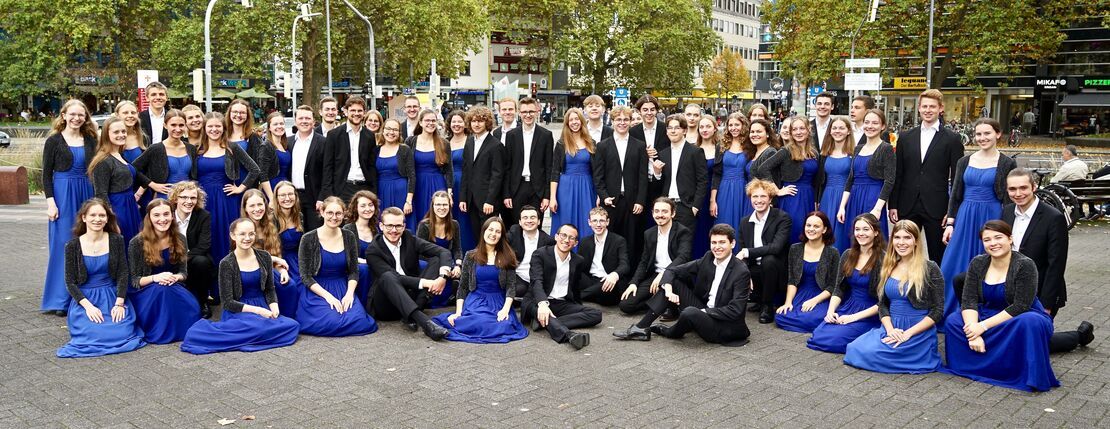
Neuer Kammerchor around the World
vakantio.de/neuerkammerchorgoesbrazil
South Africa Day 8 - Cancelled Concert
Nai-publish: 28.05.2024
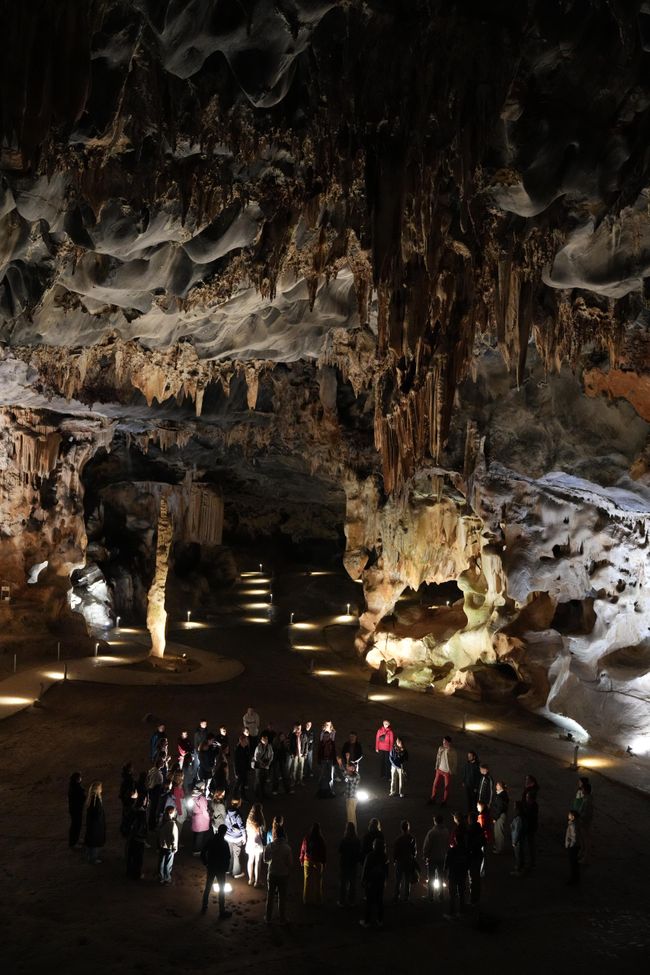
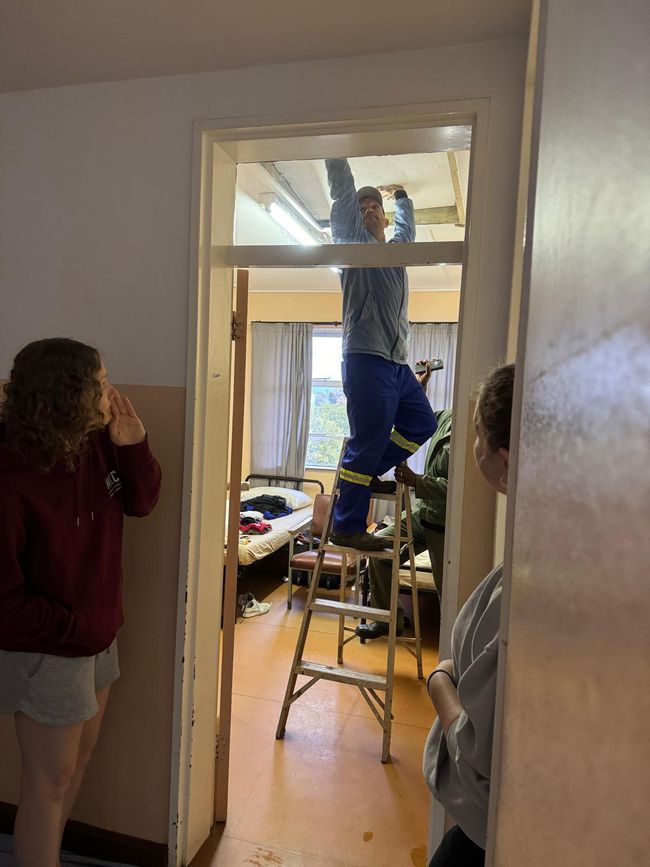
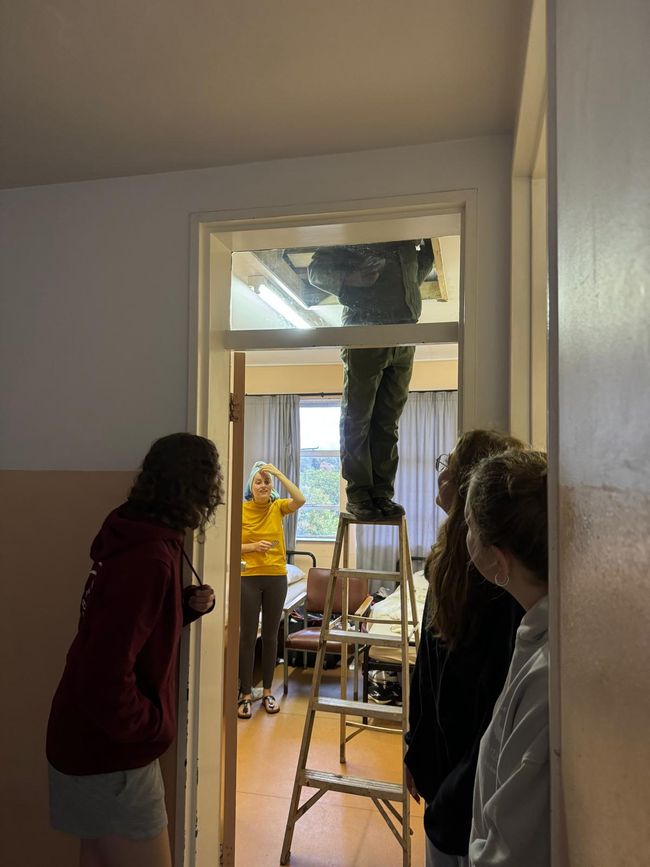
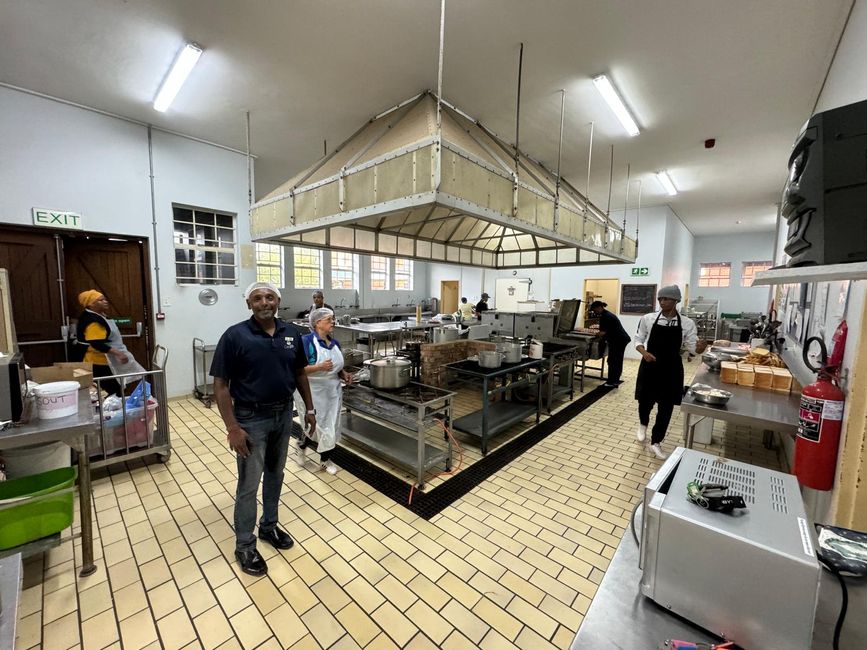

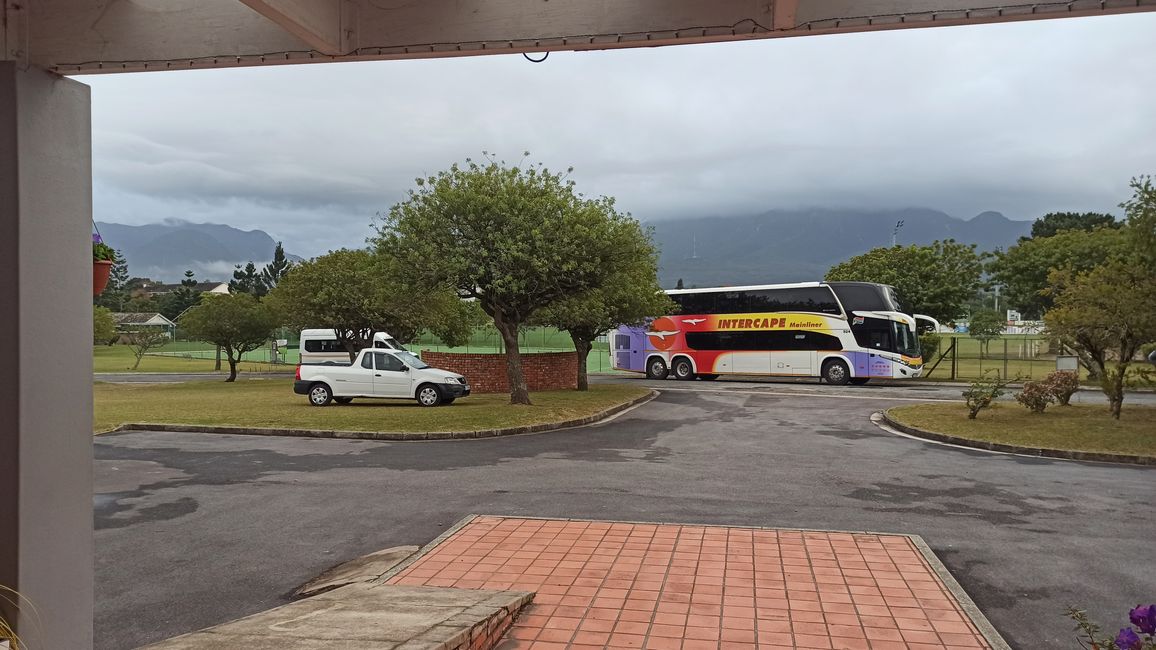

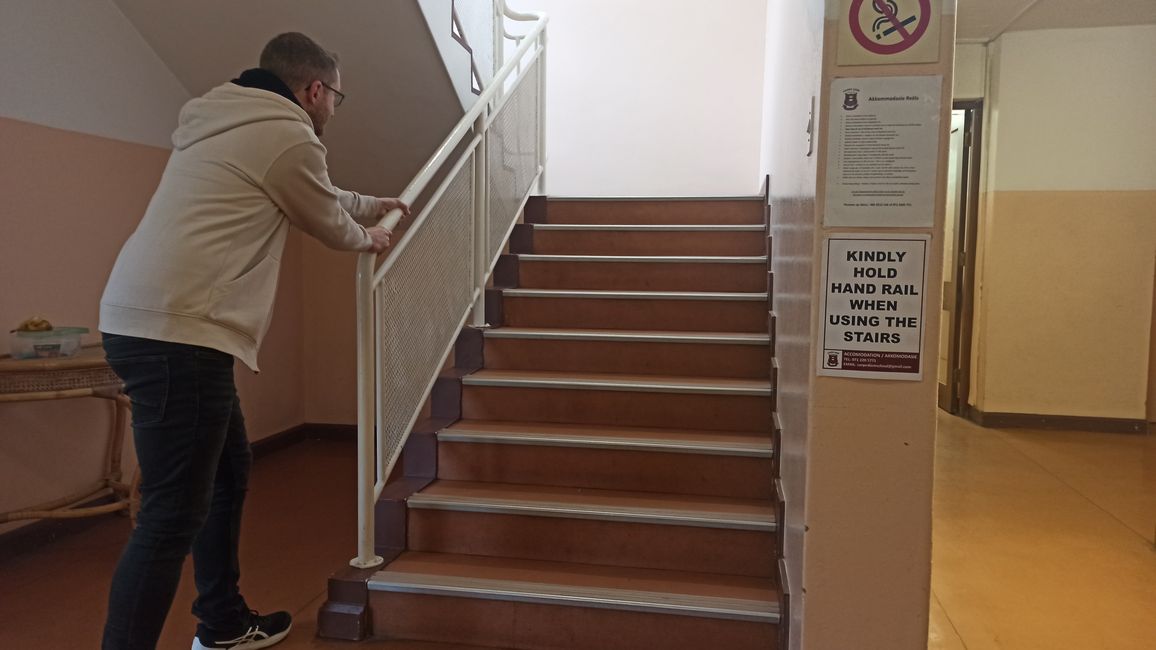
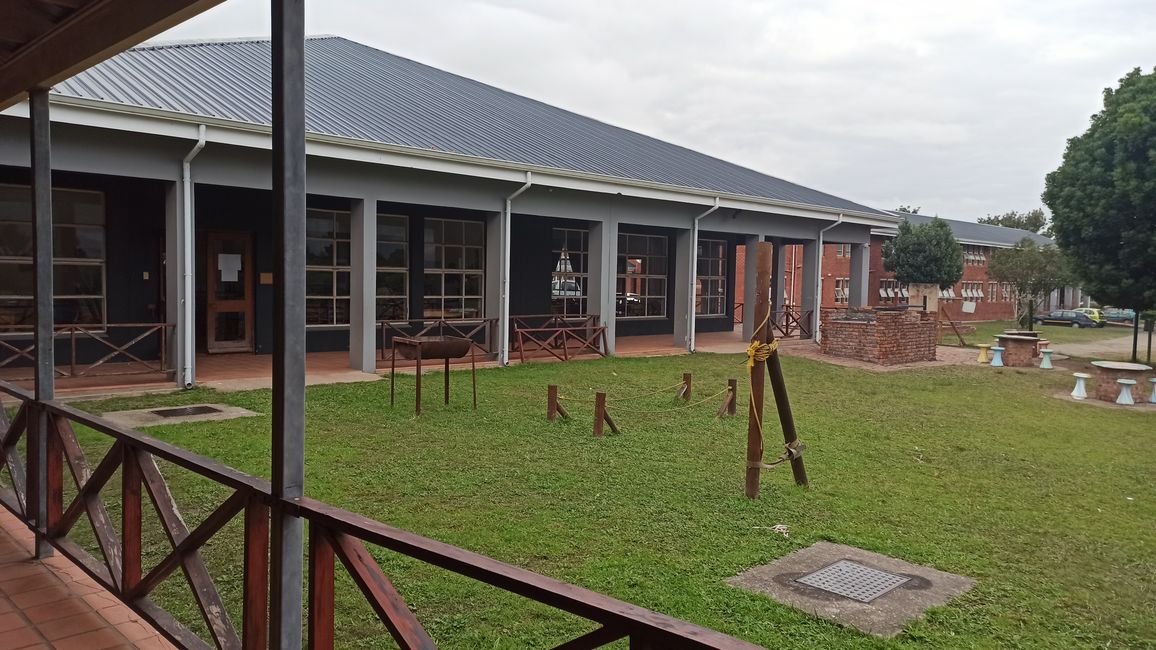

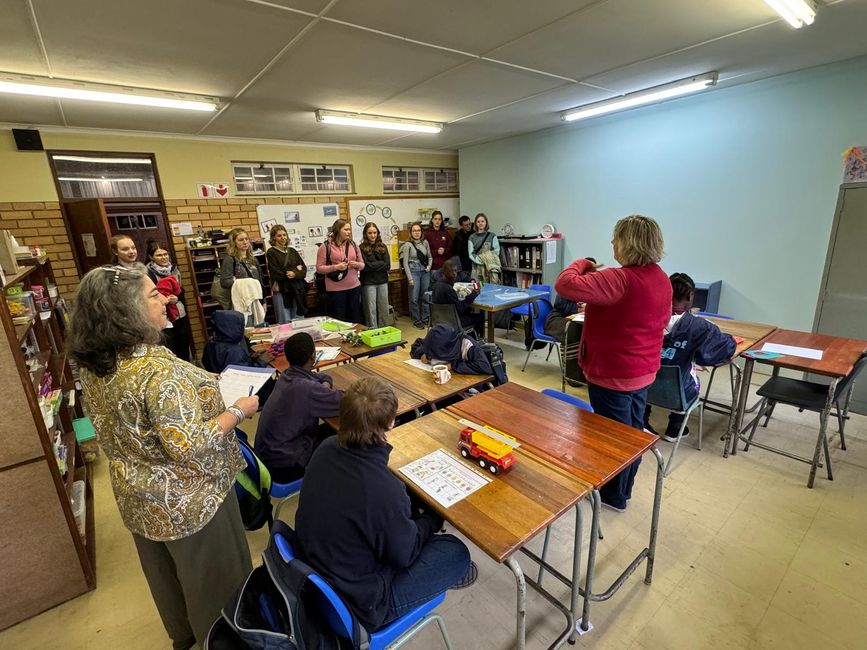



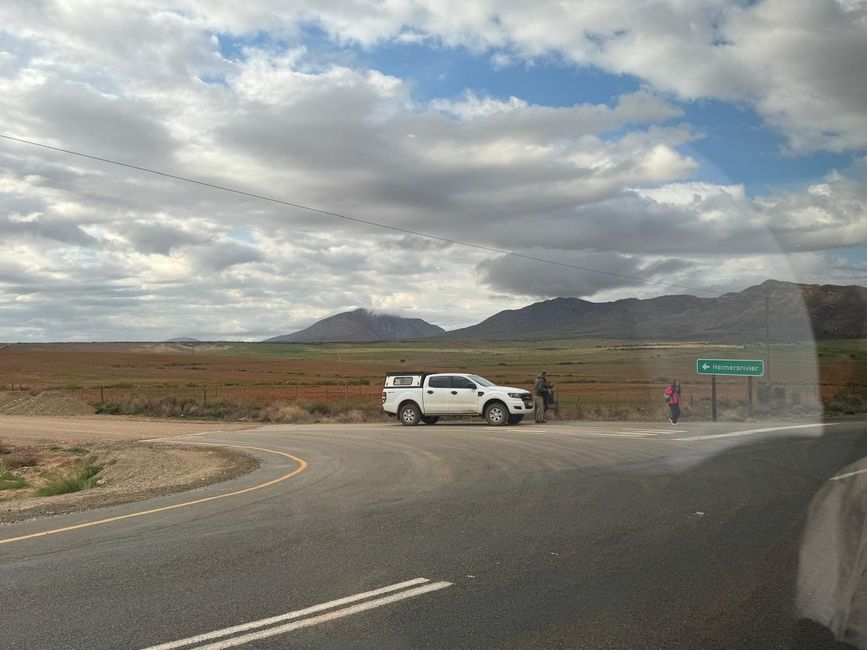
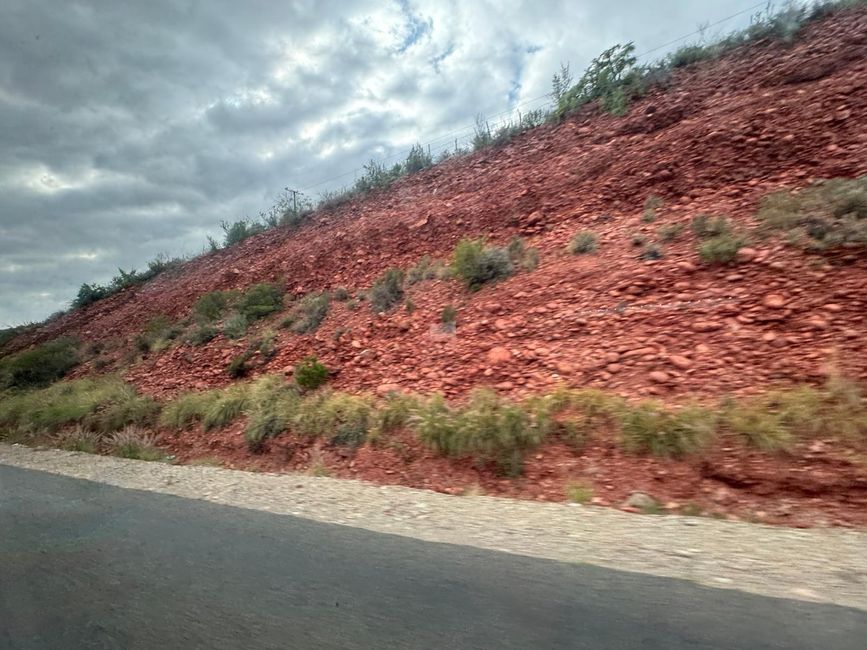
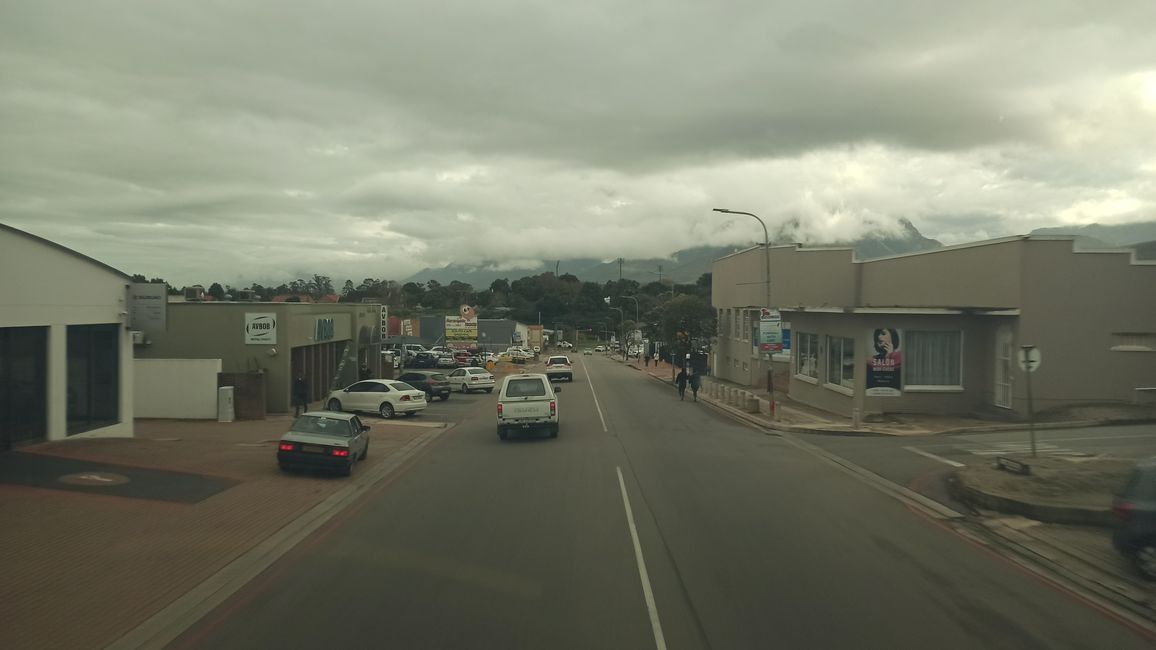

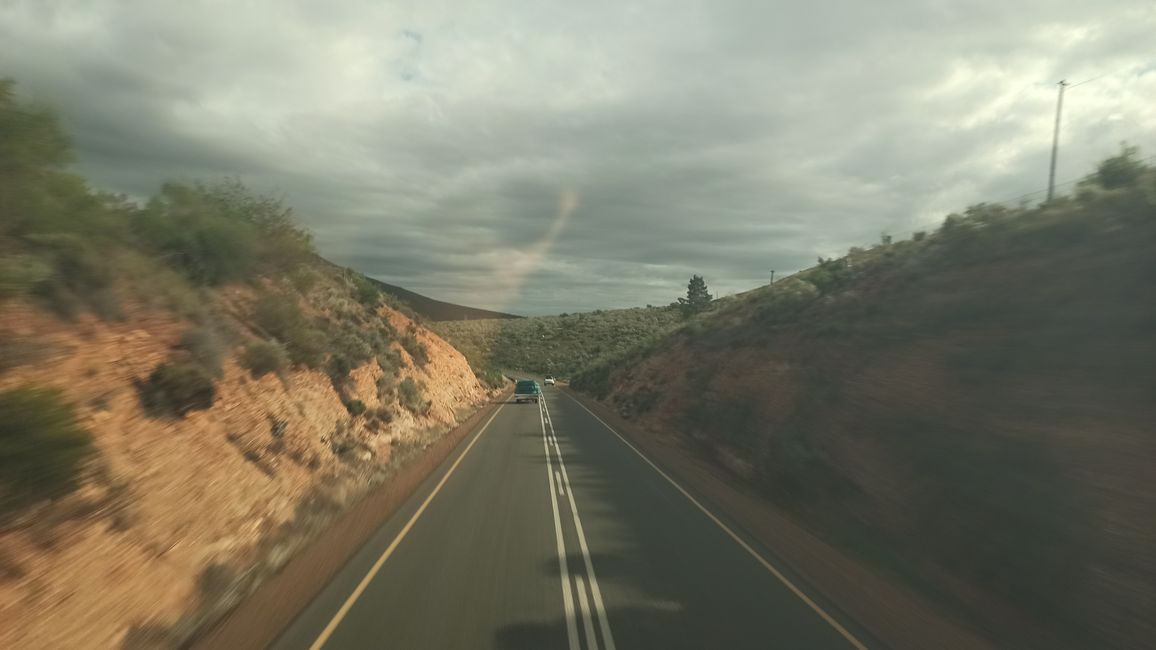
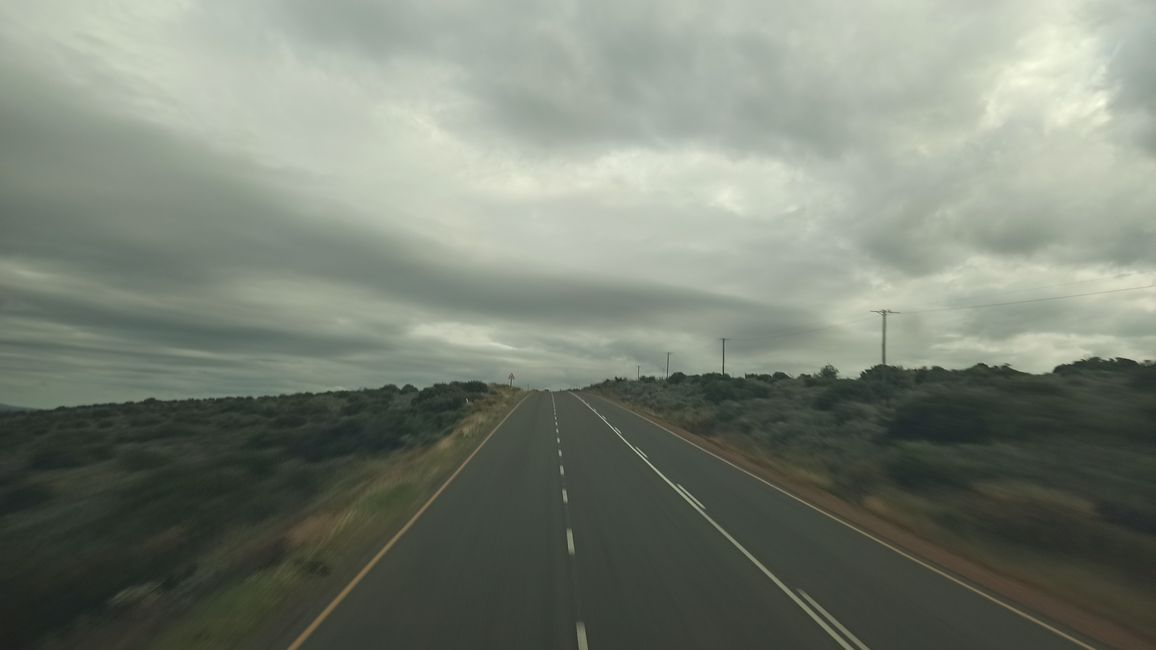
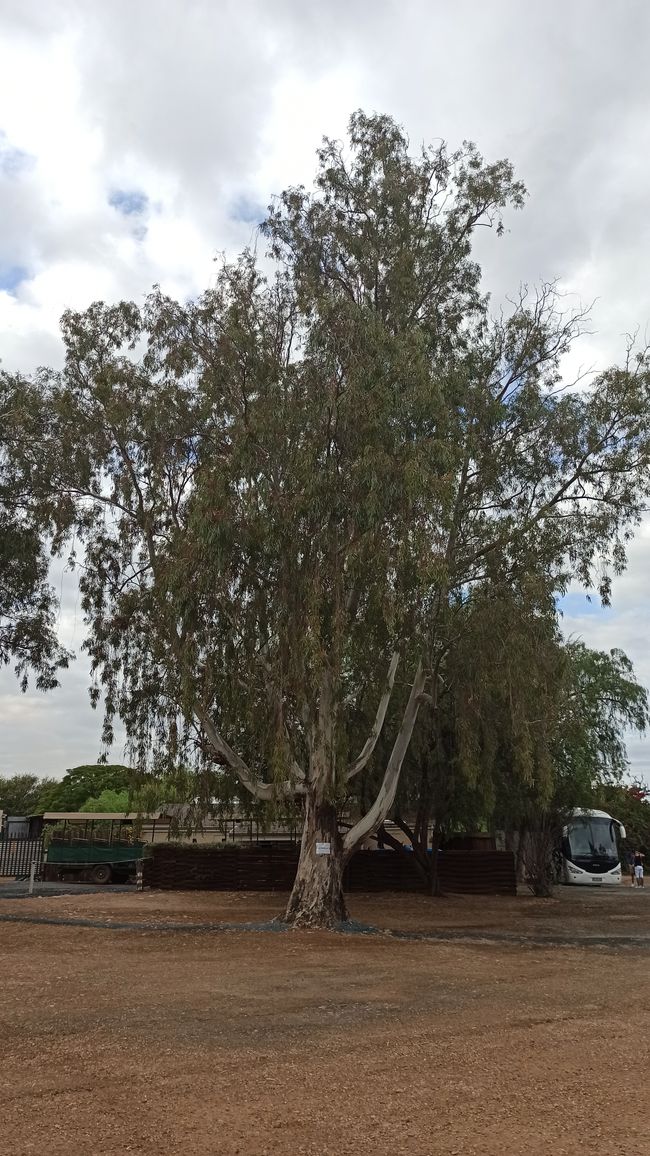
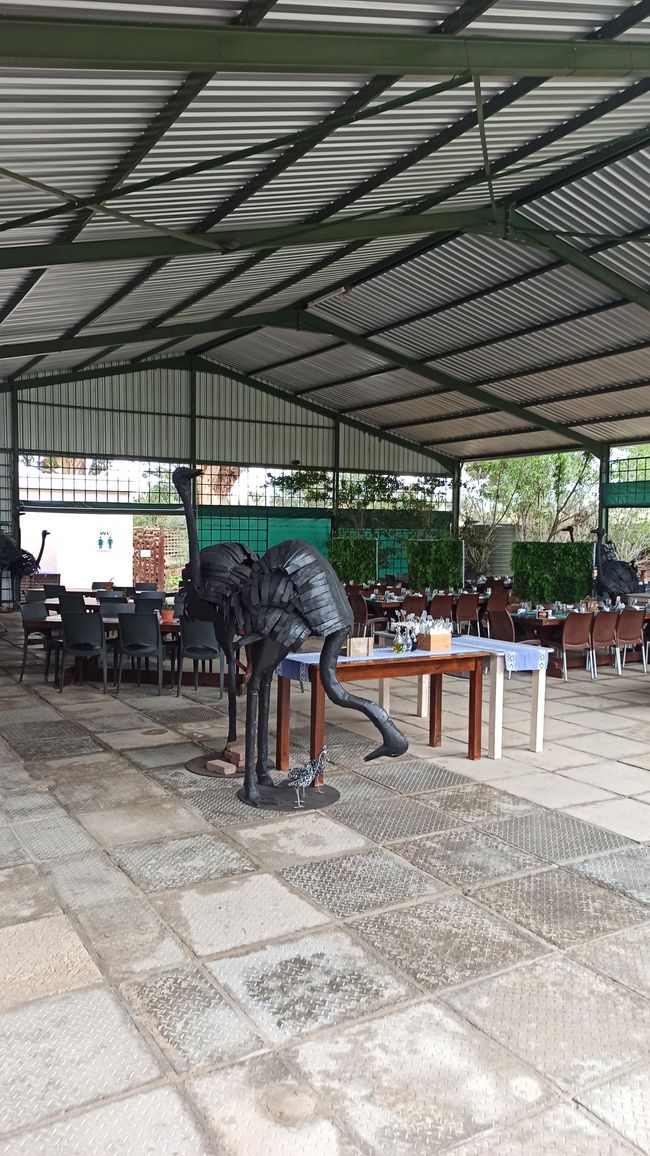
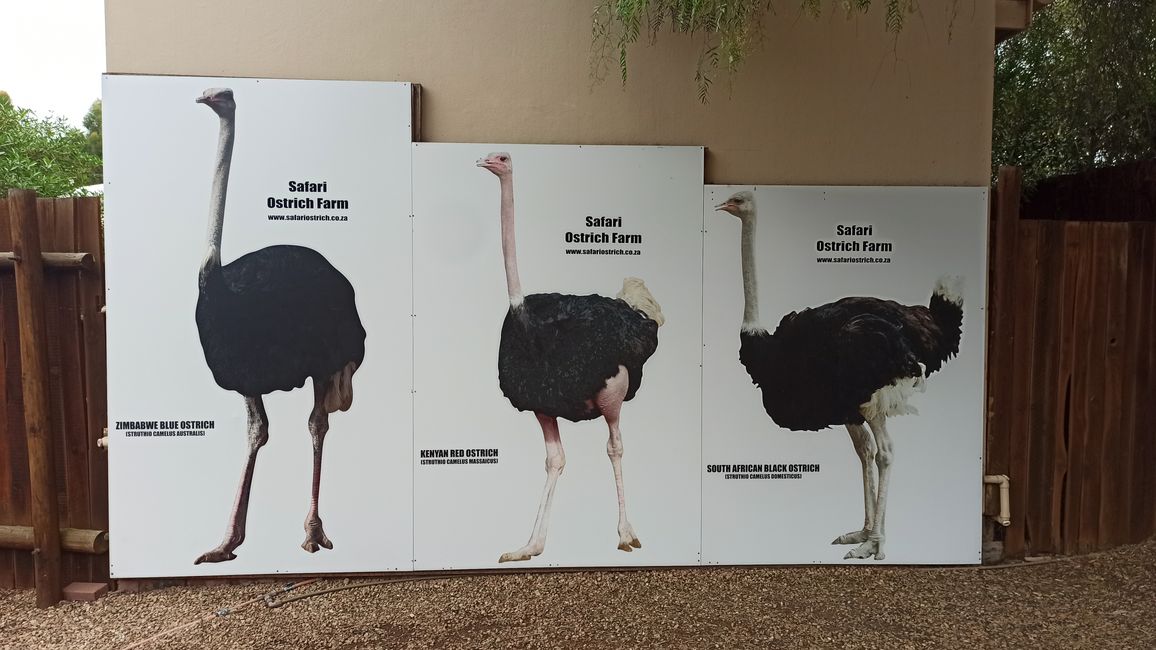
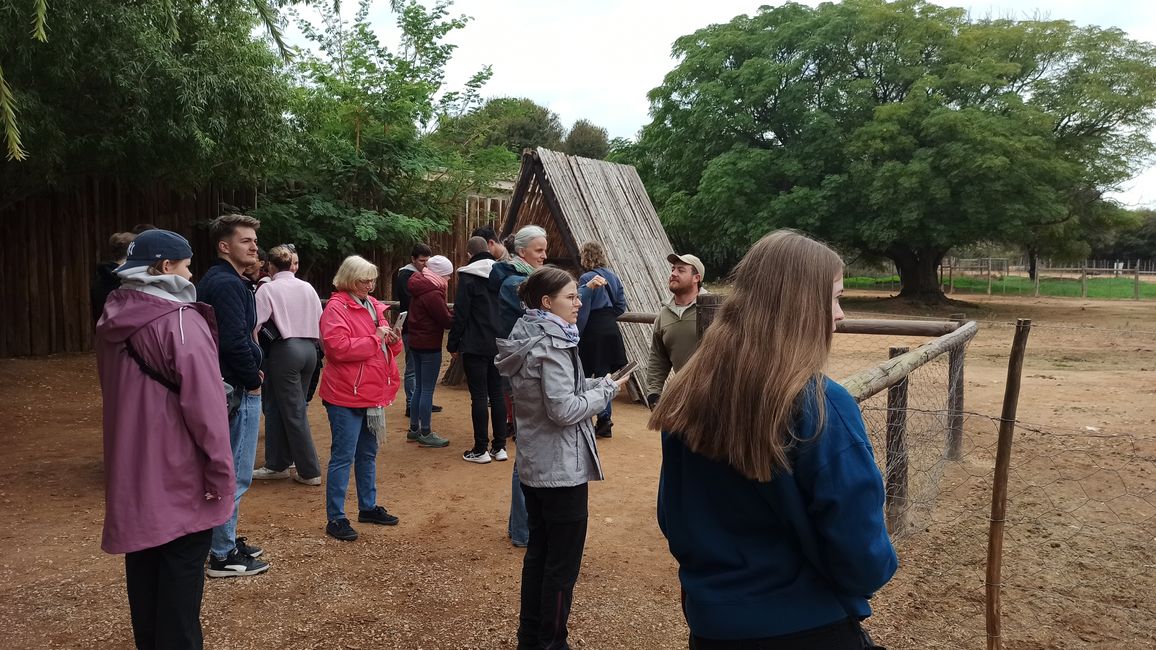
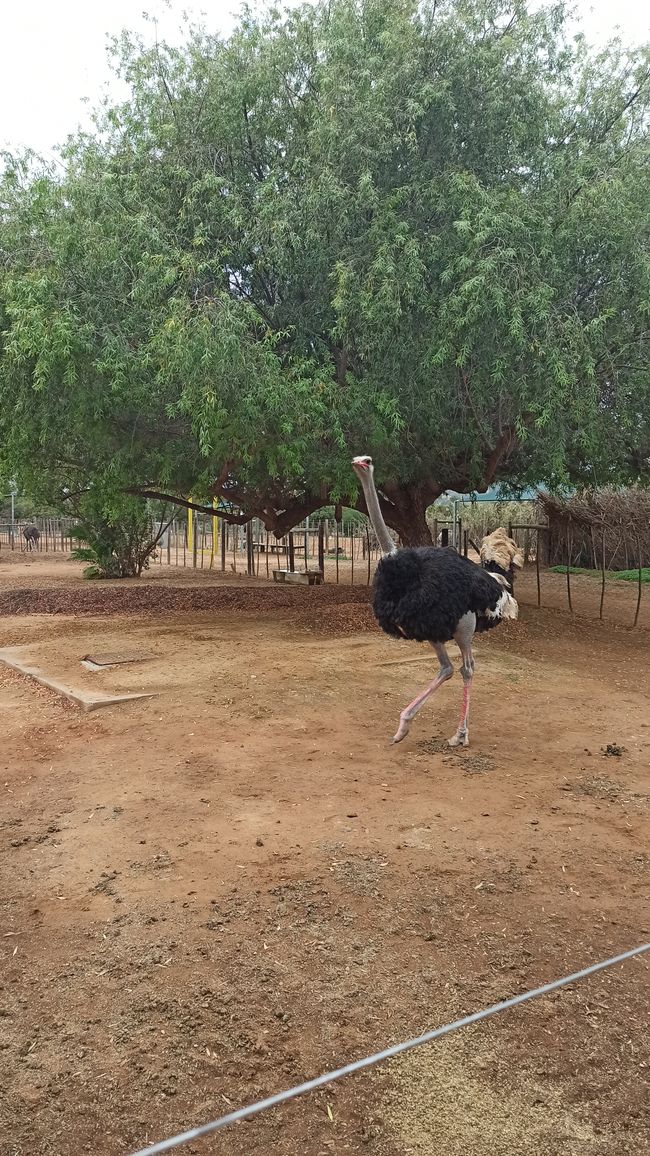
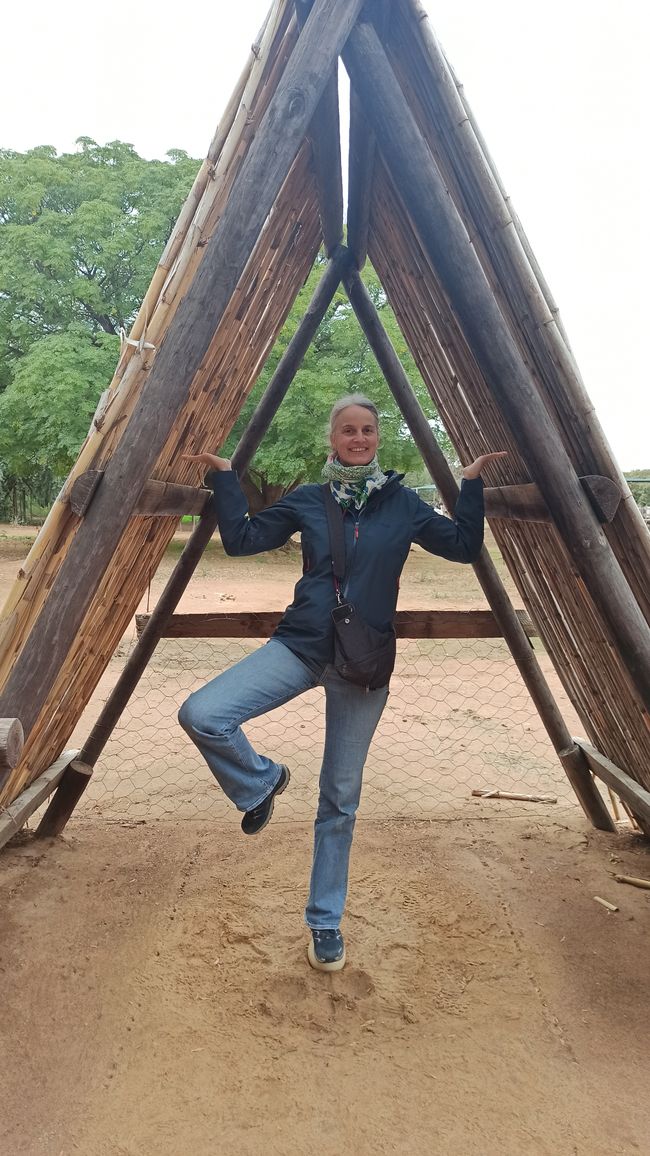
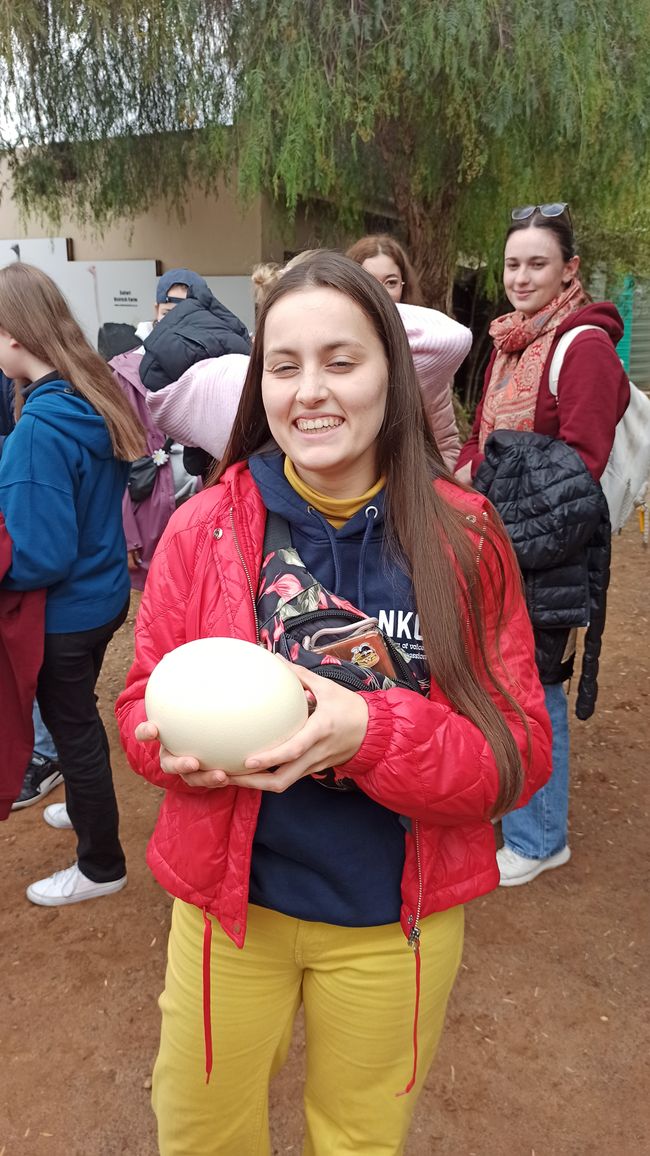
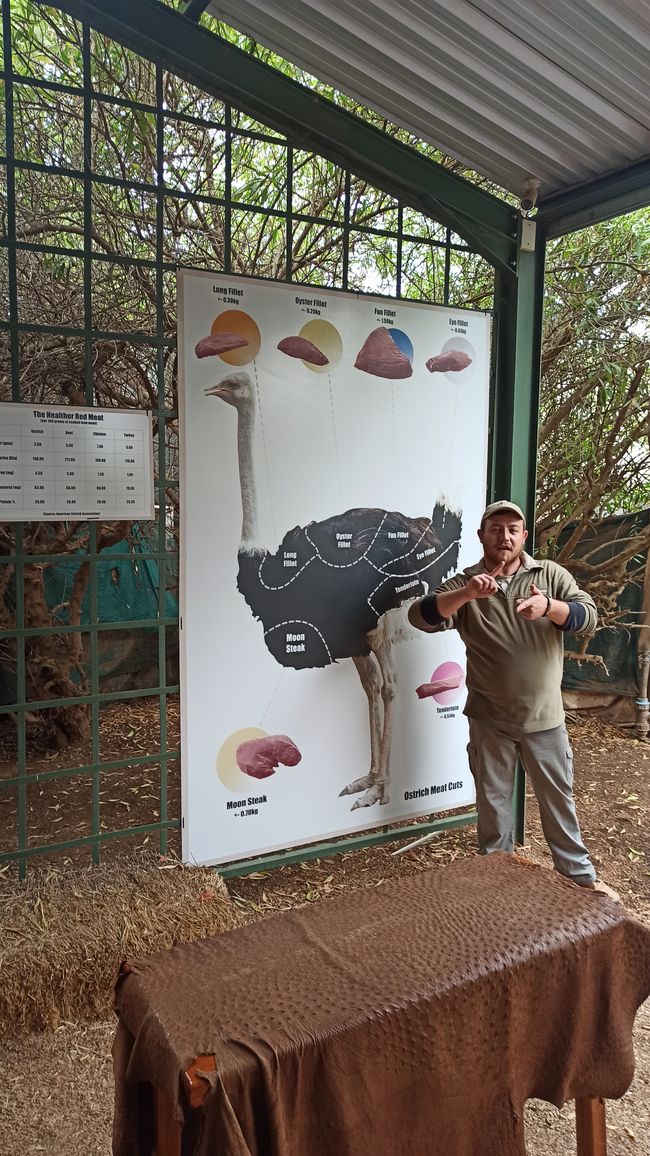
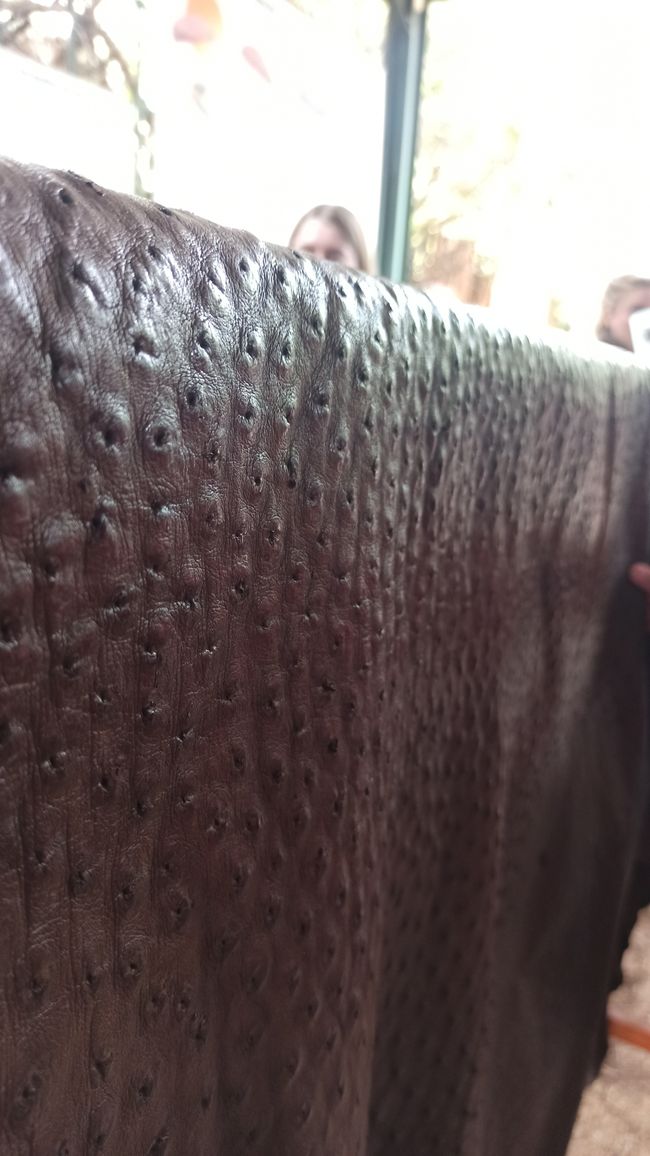
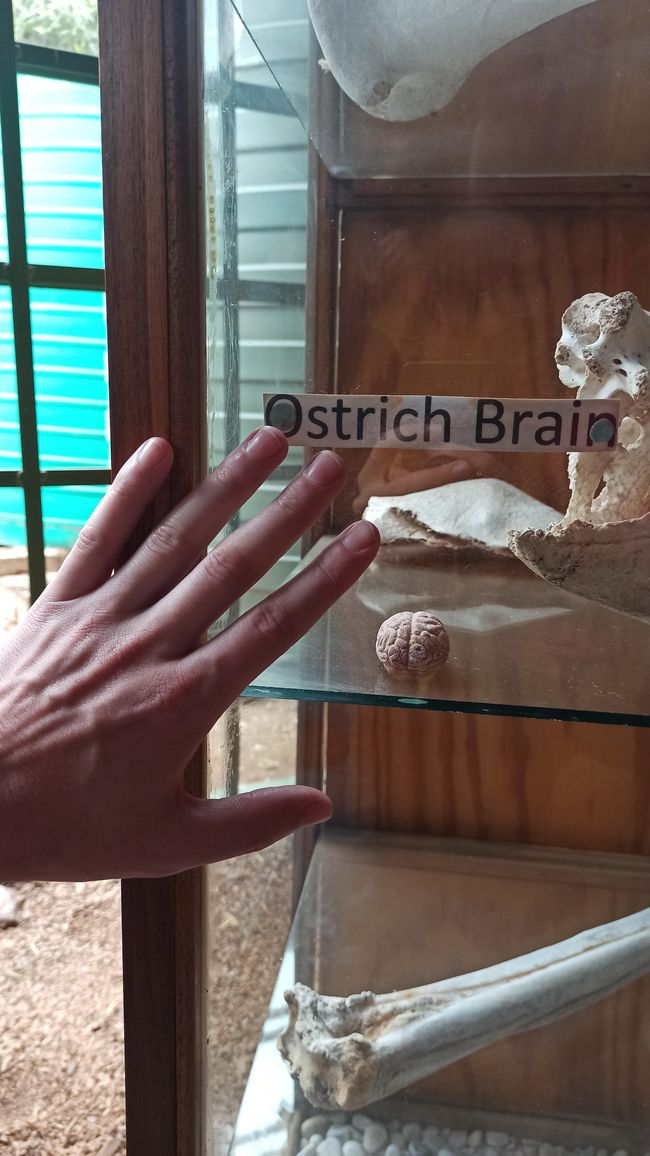
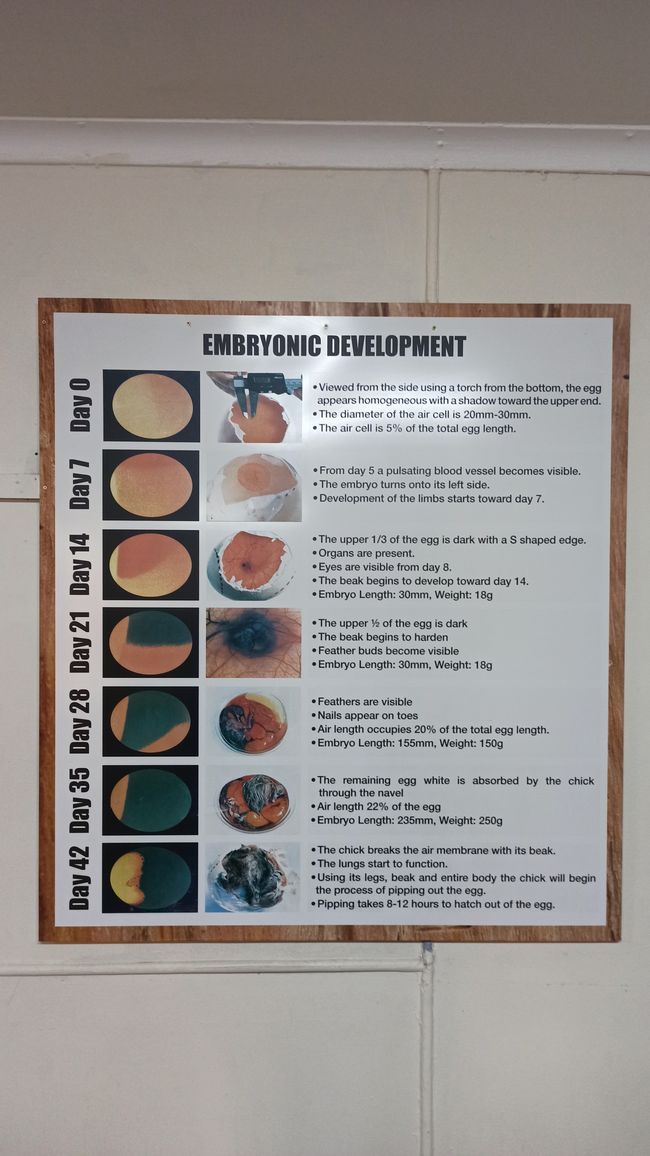
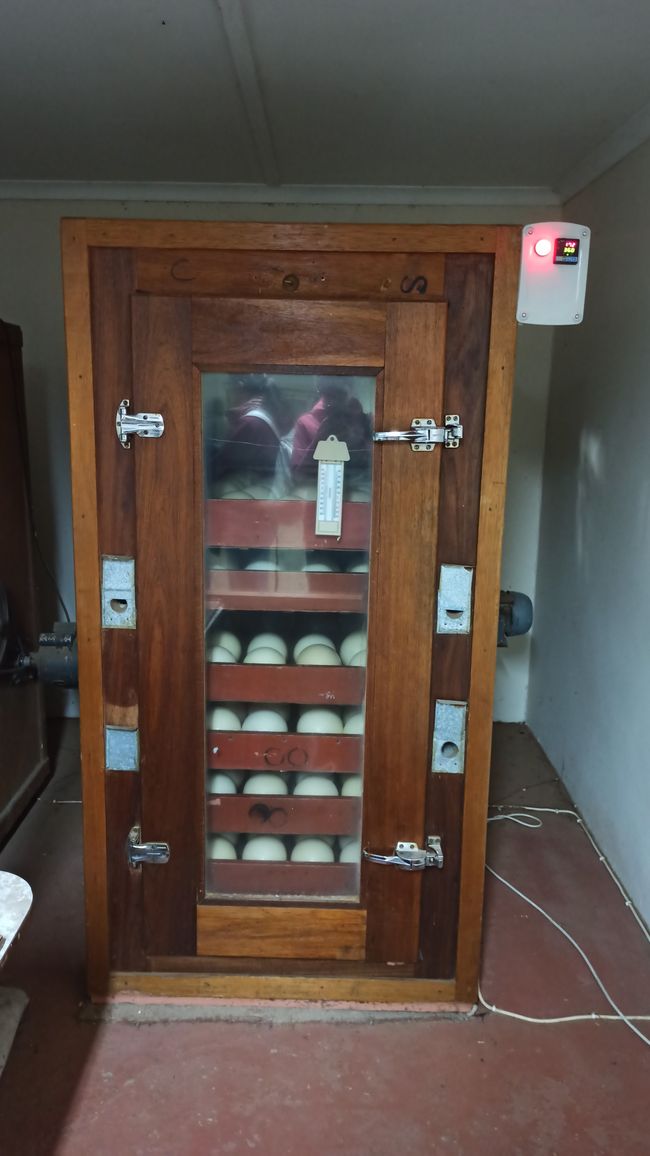
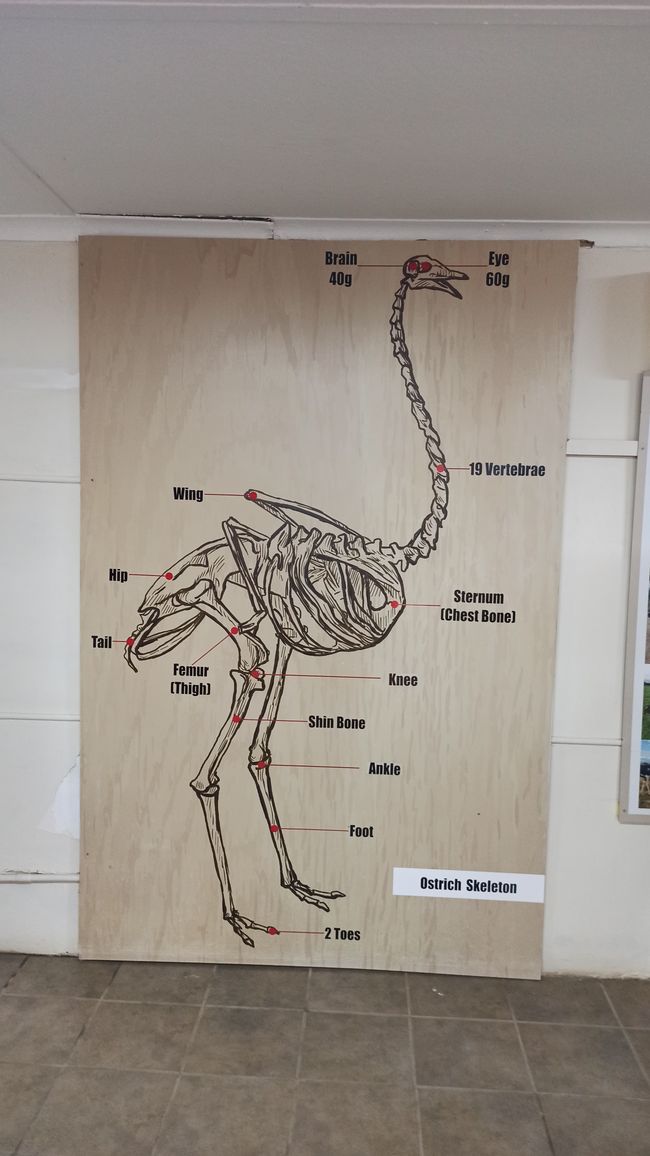

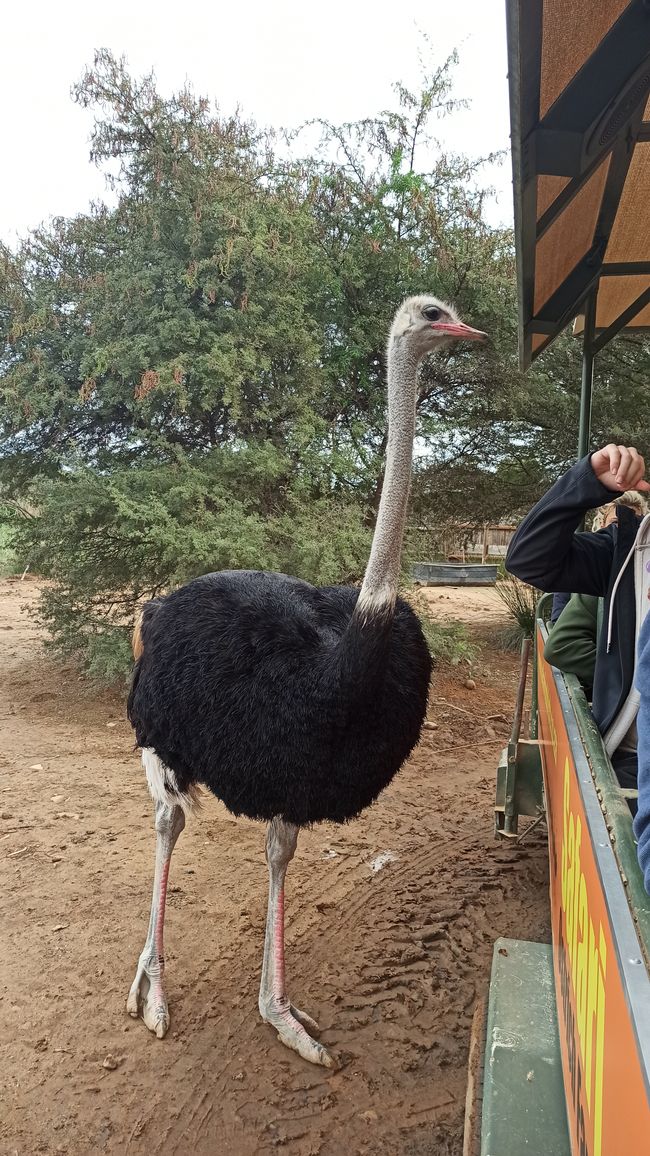
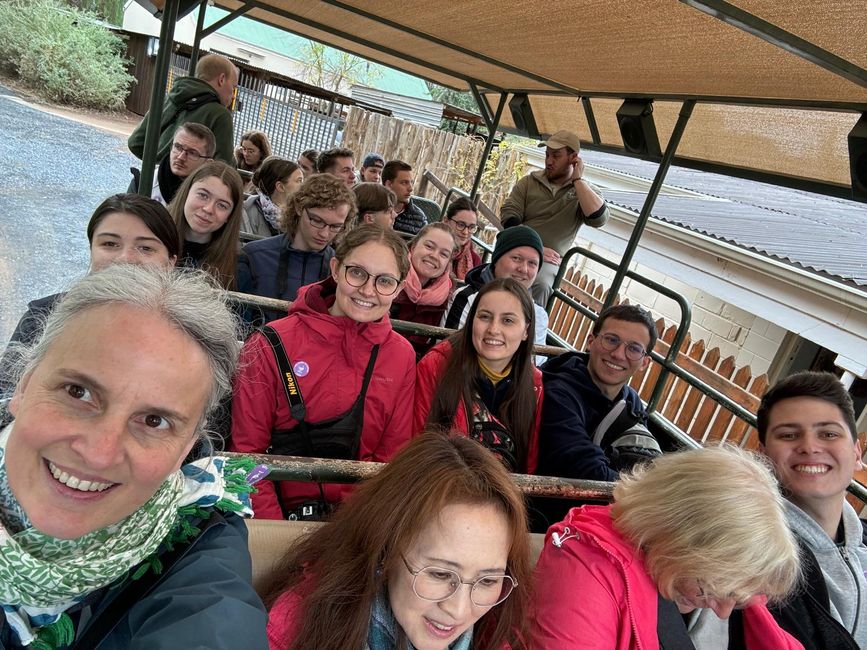
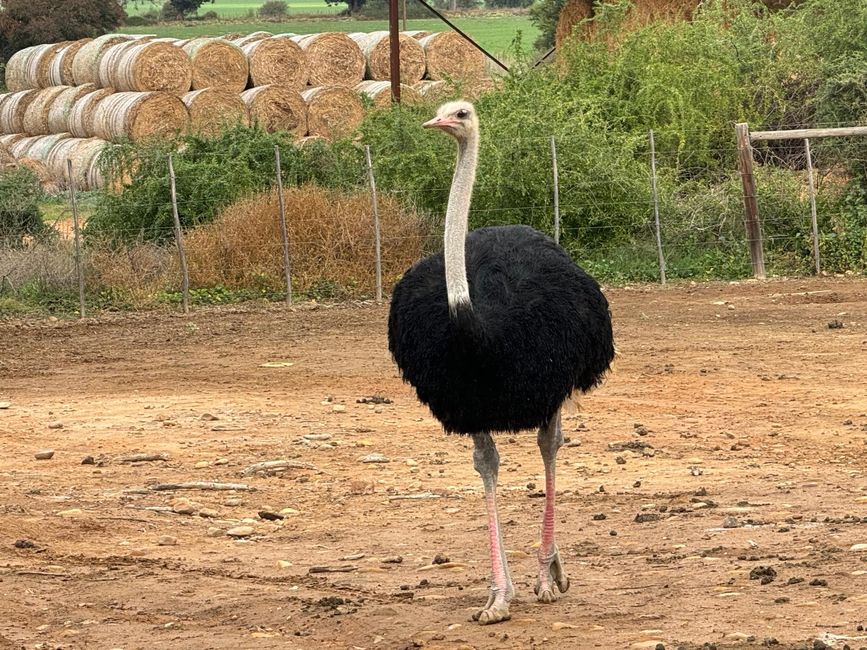
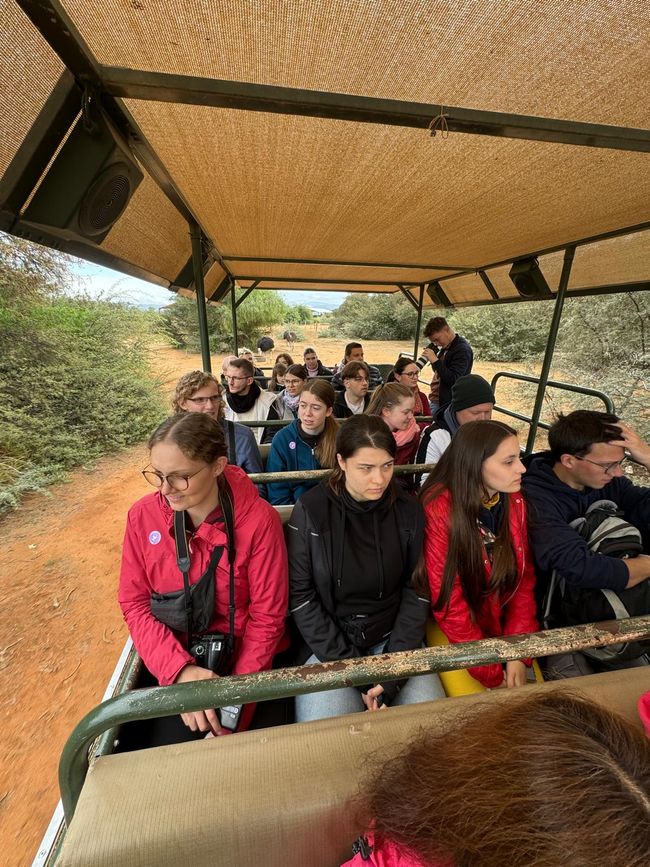

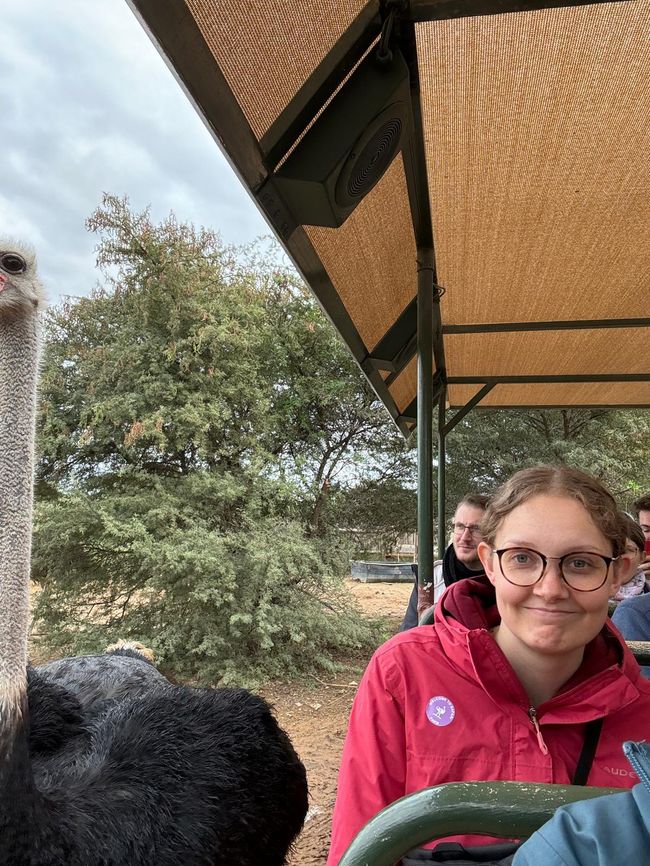
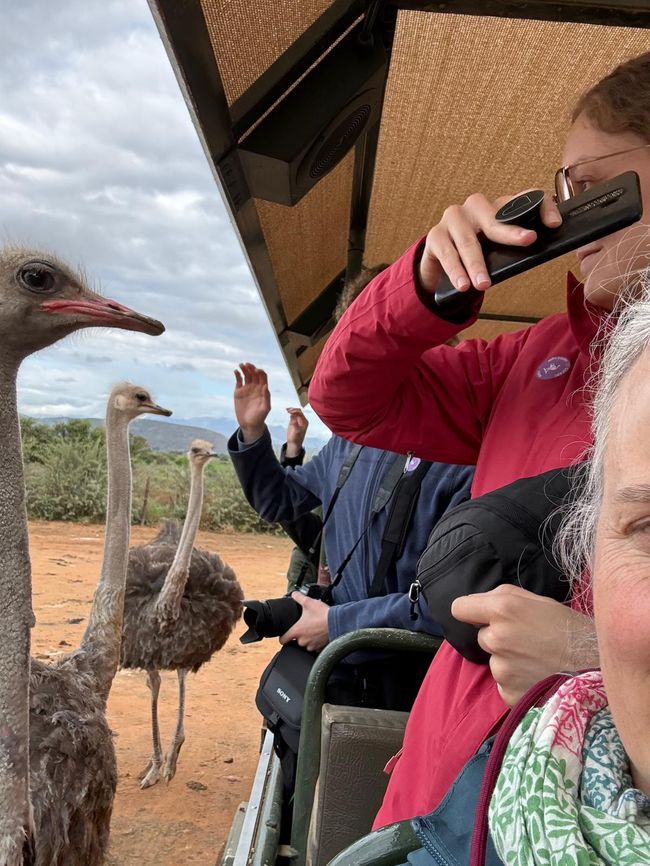

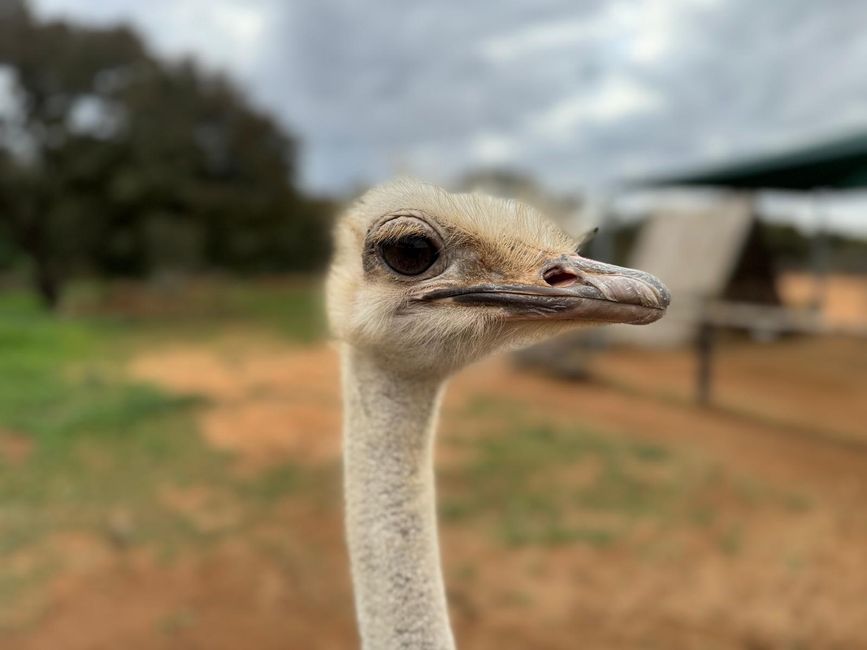
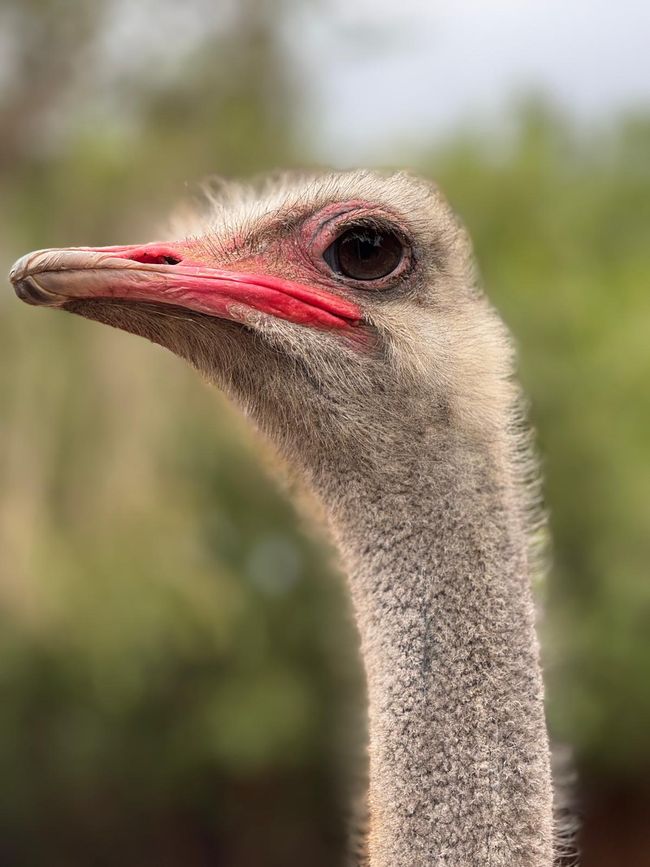
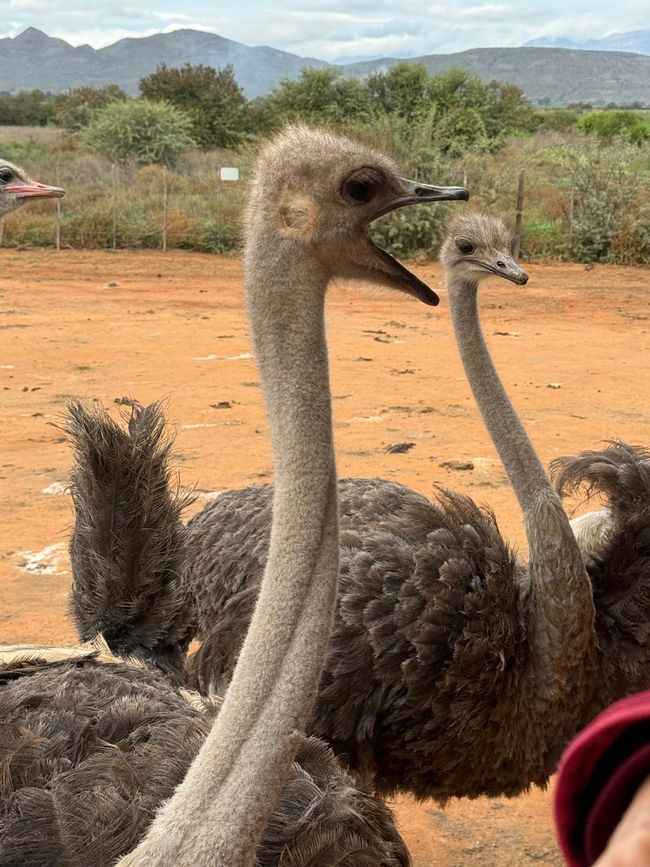
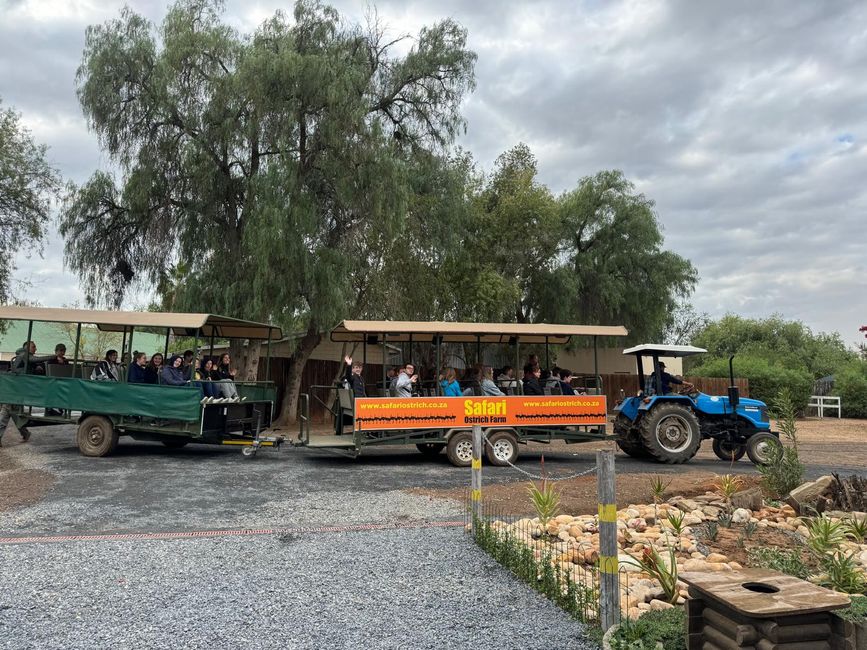
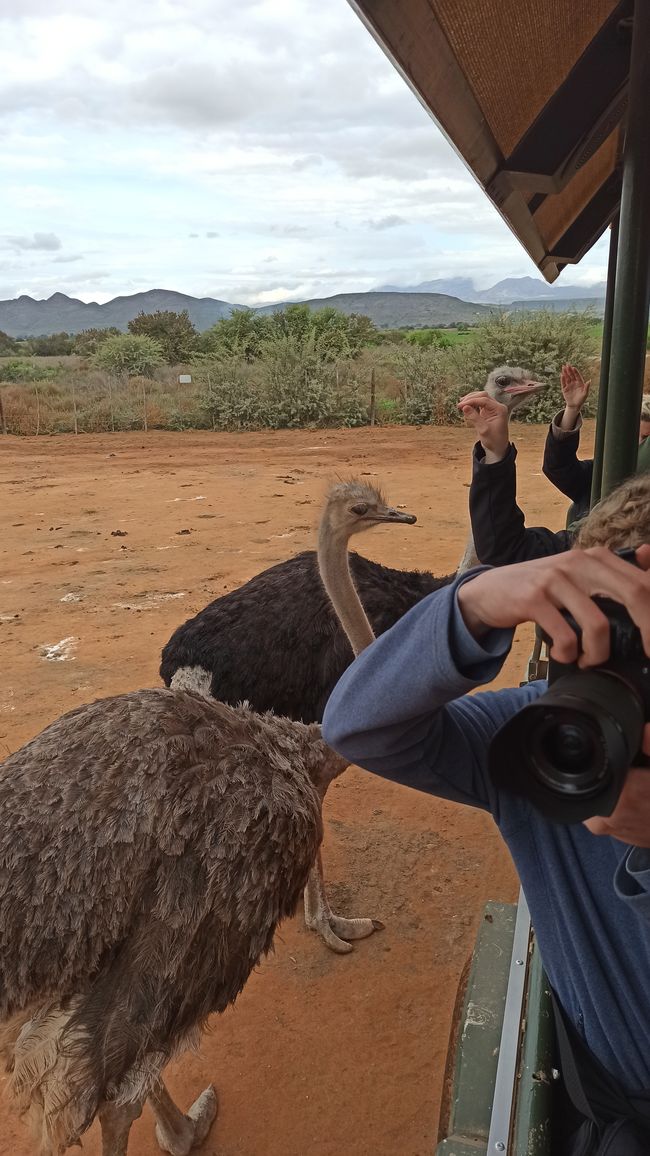
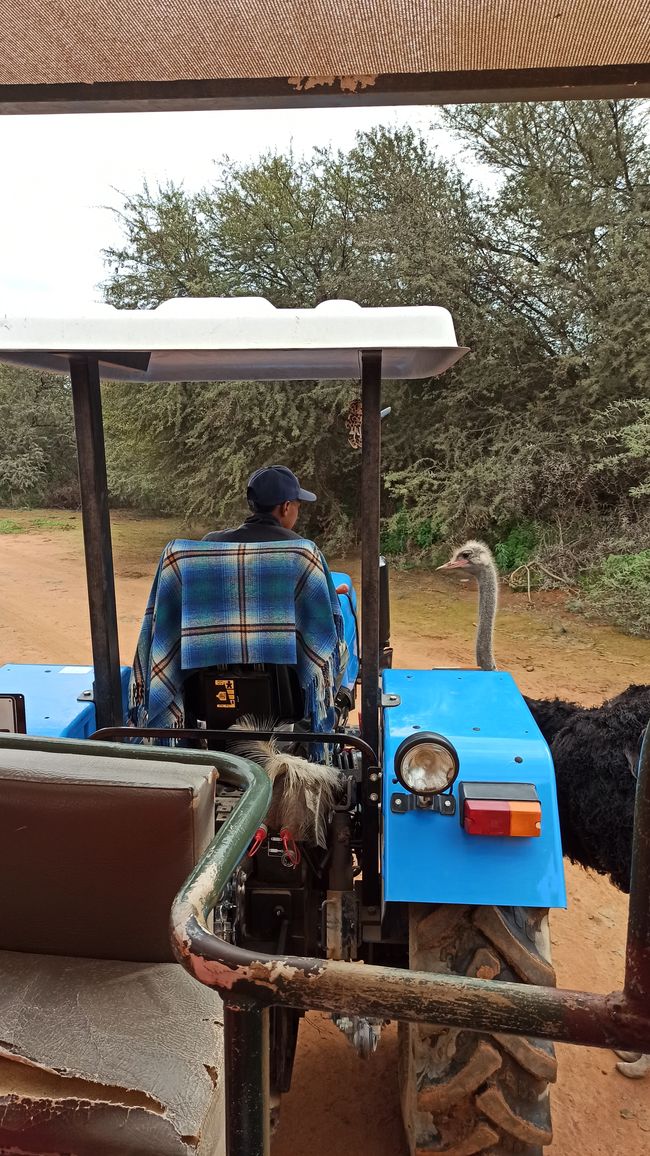
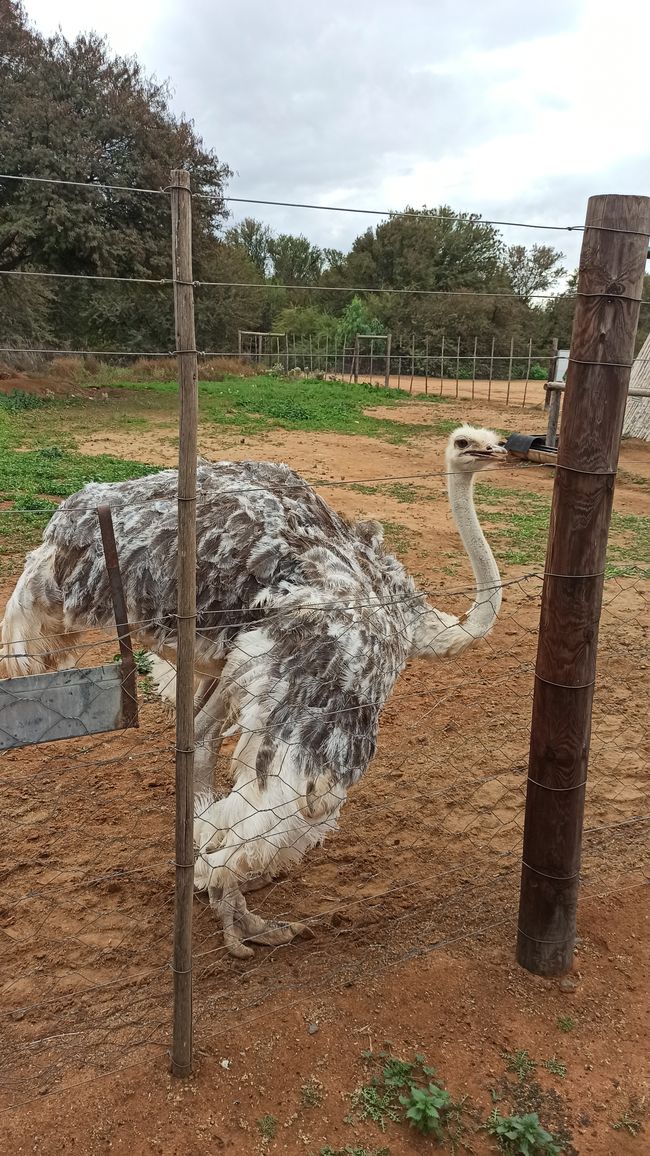
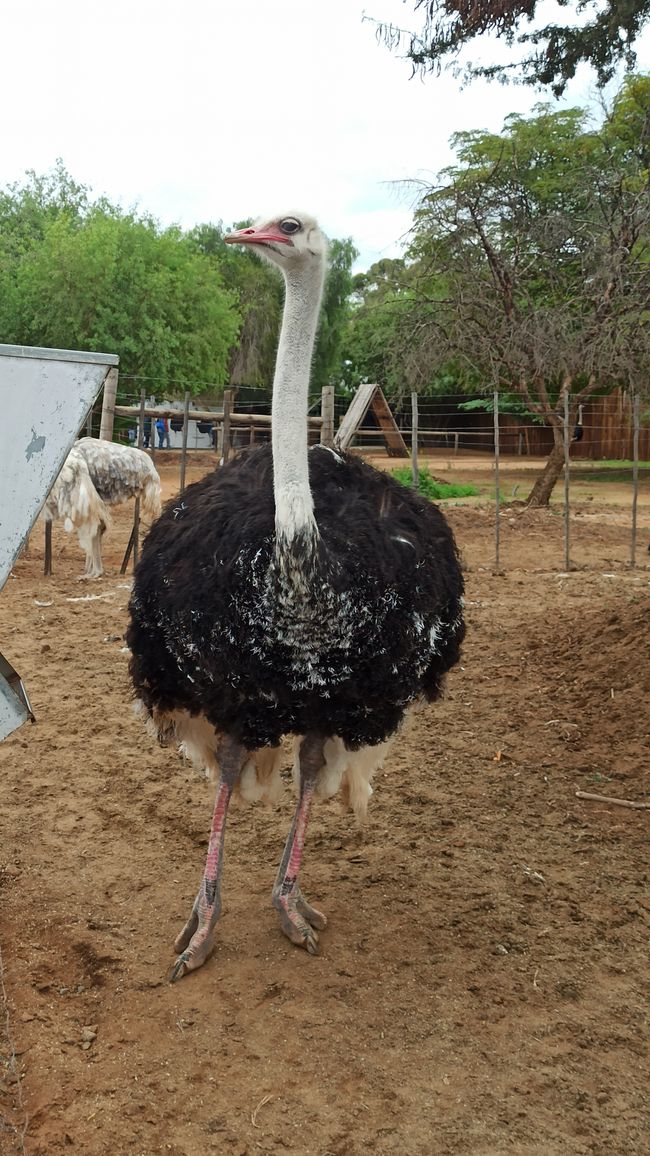
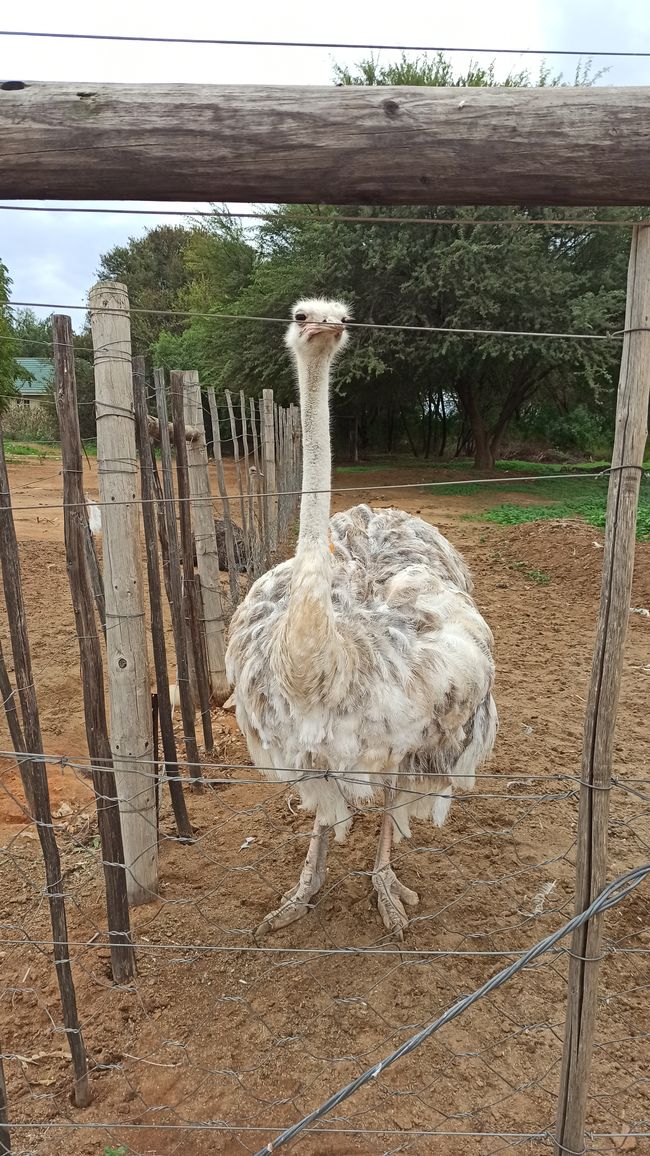
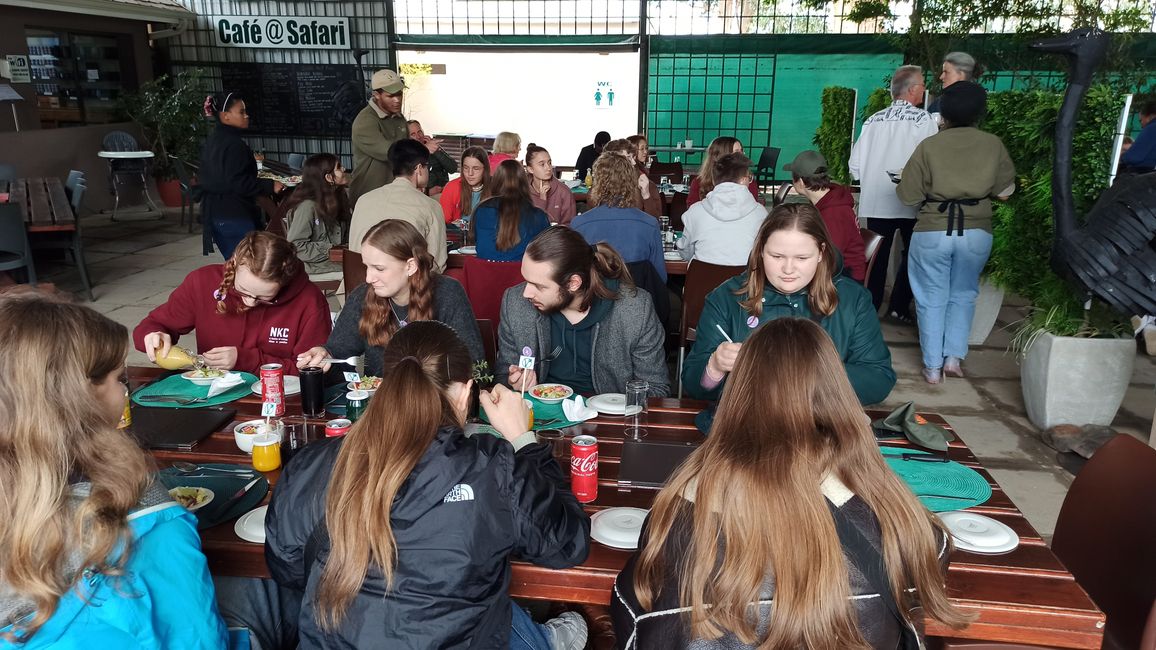
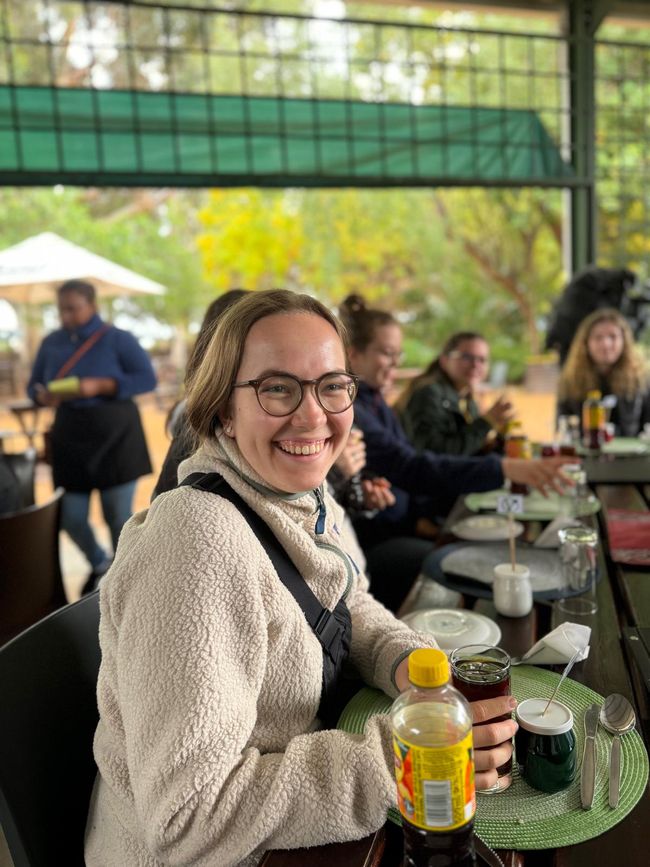
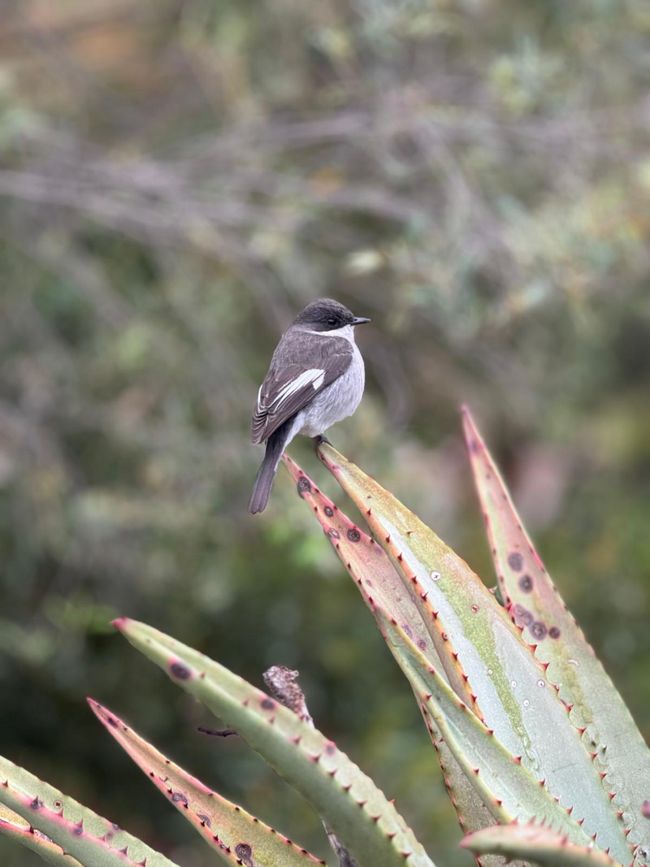
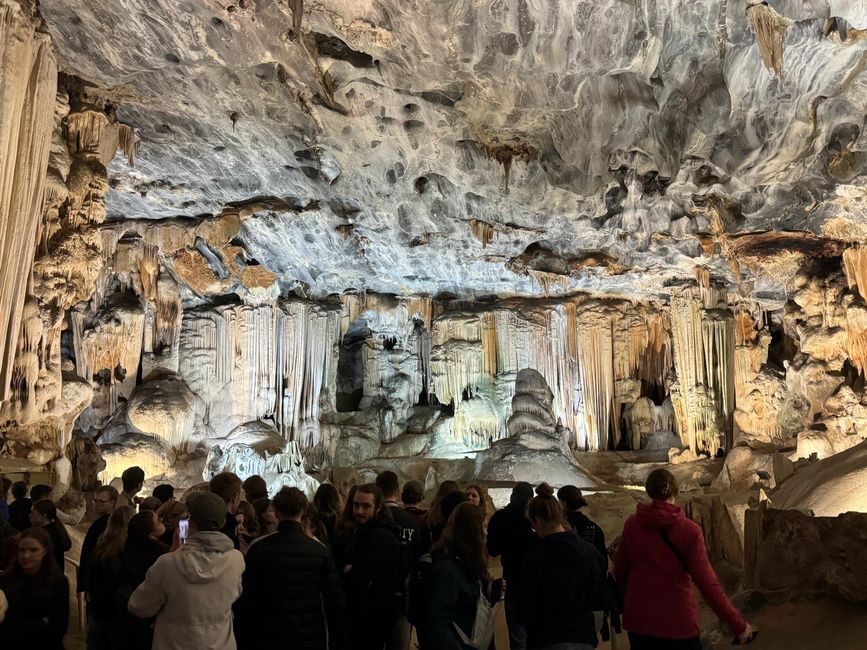

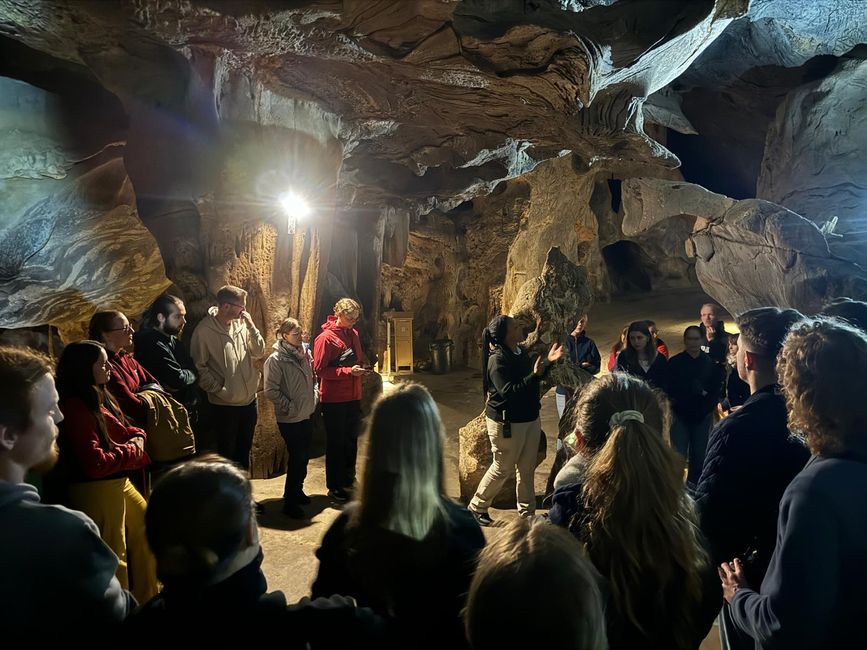

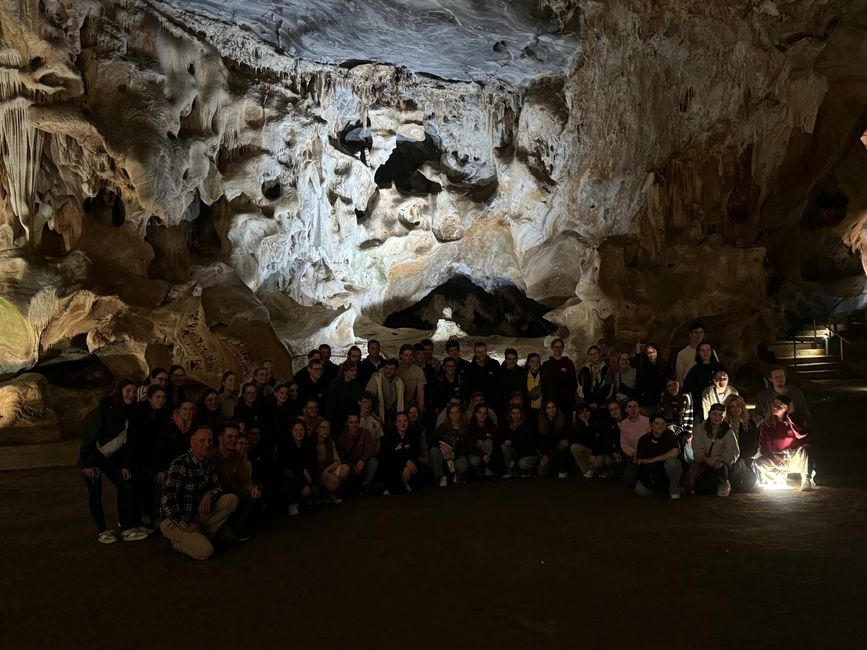
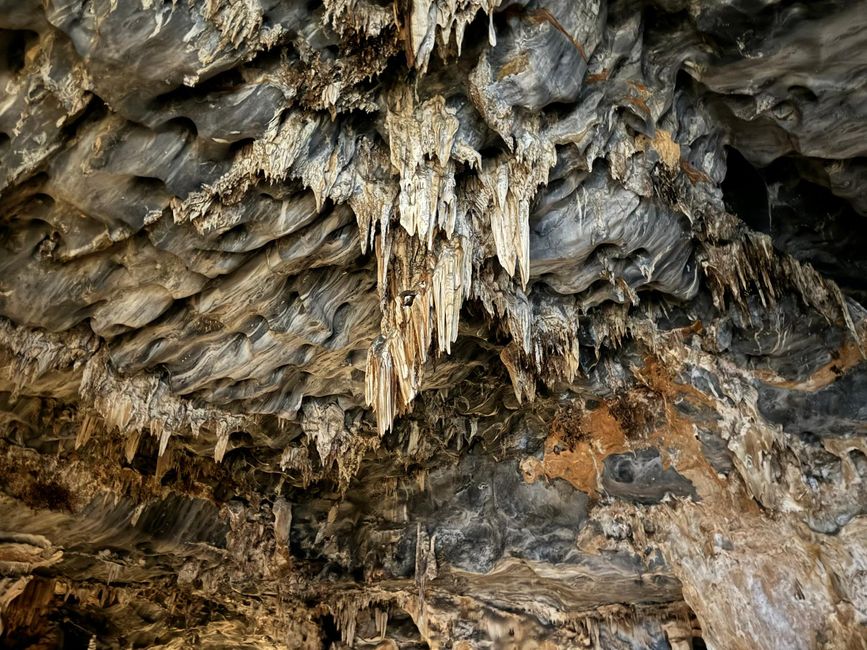
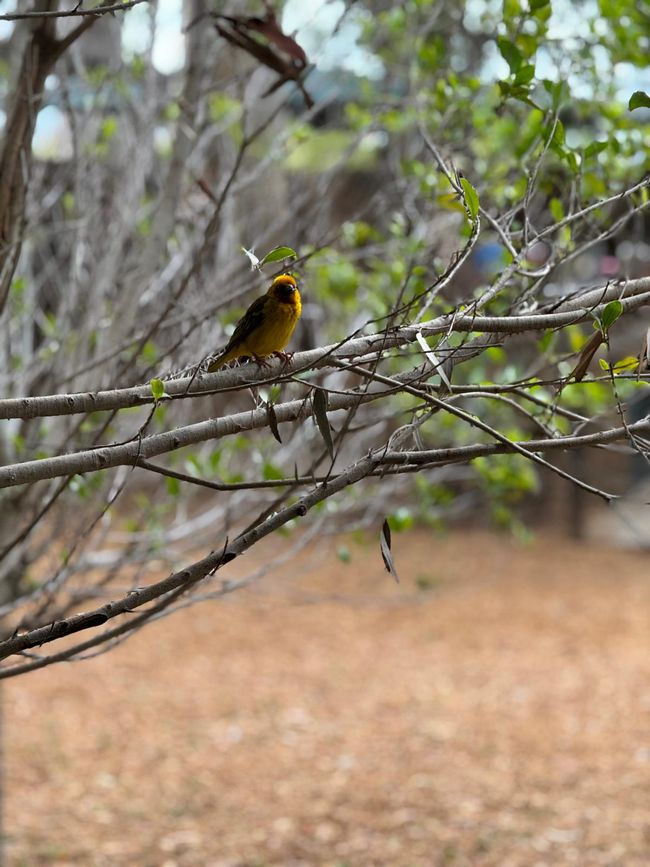
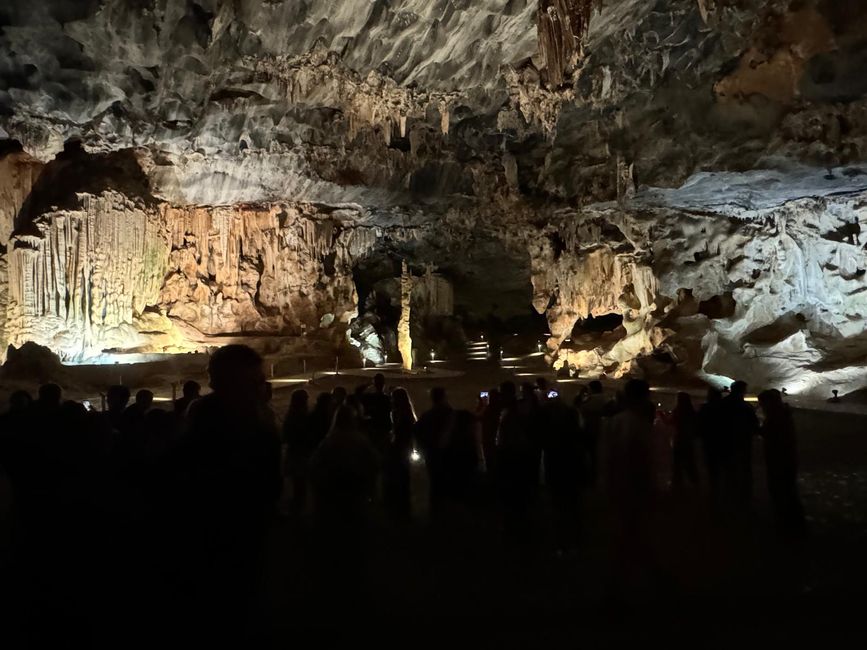

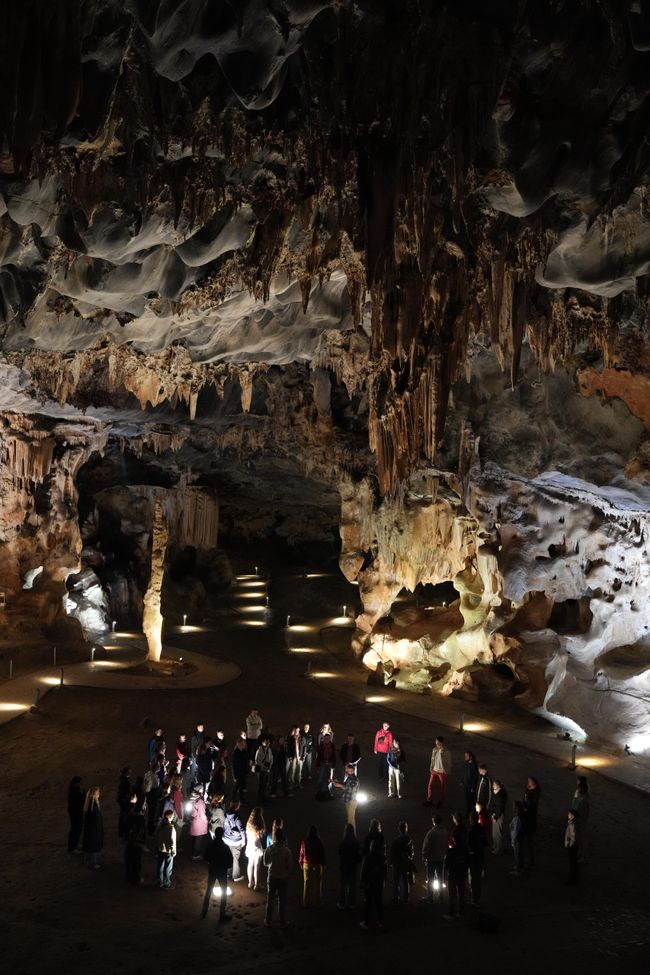
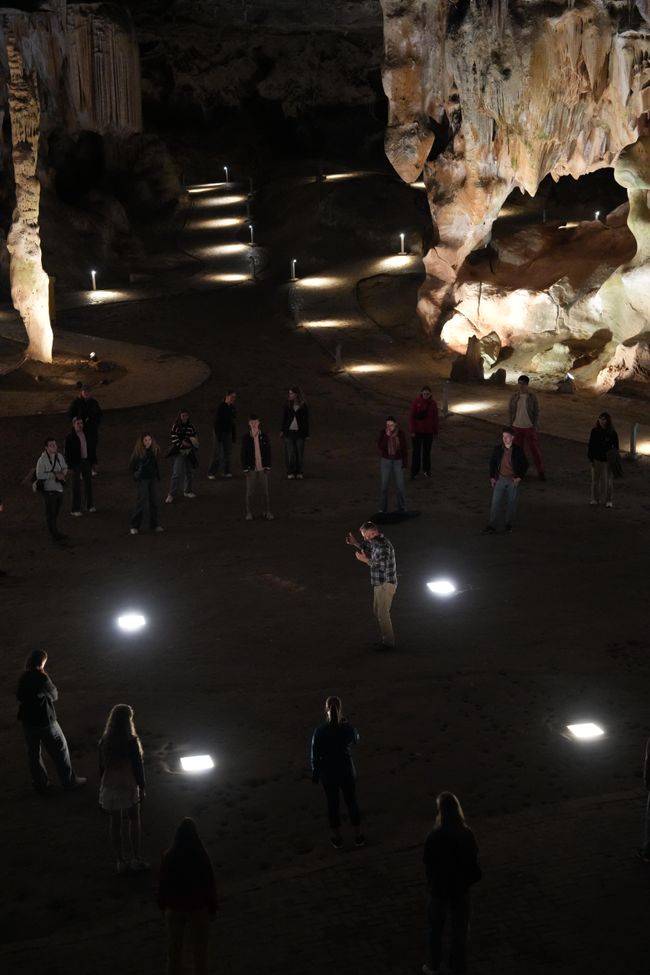
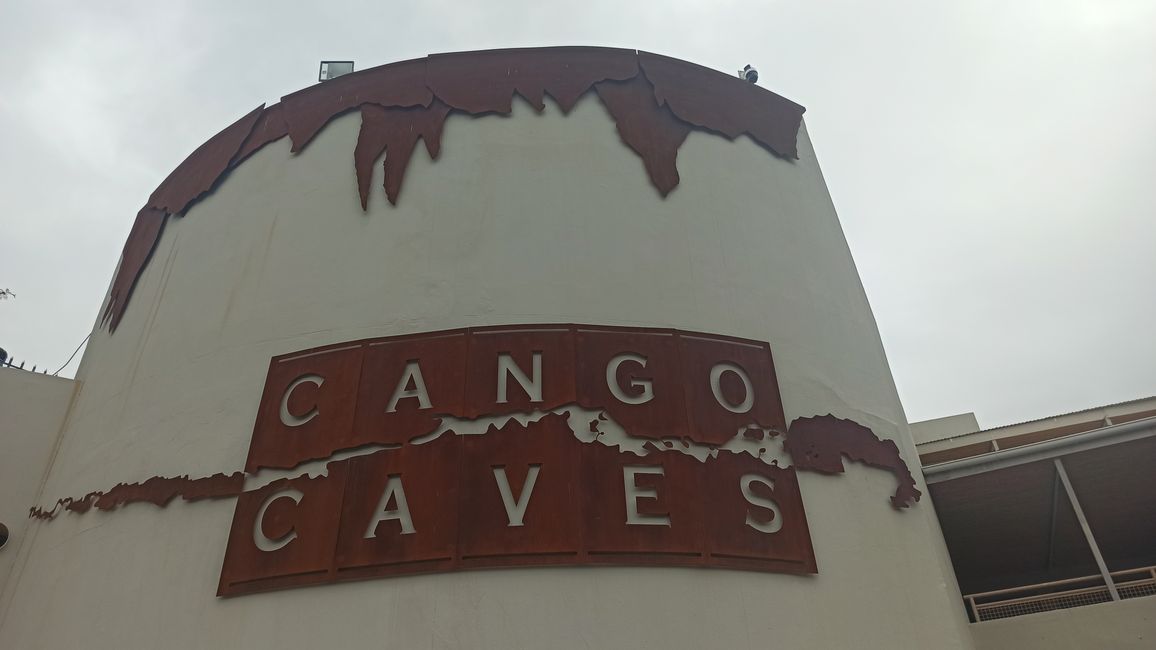
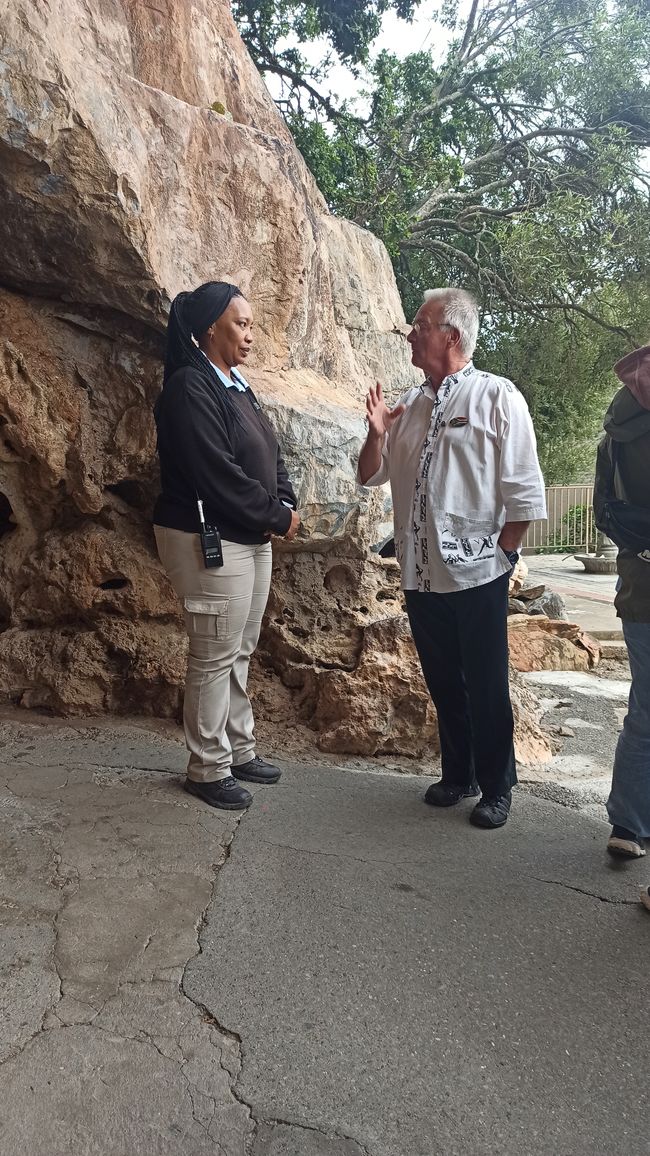
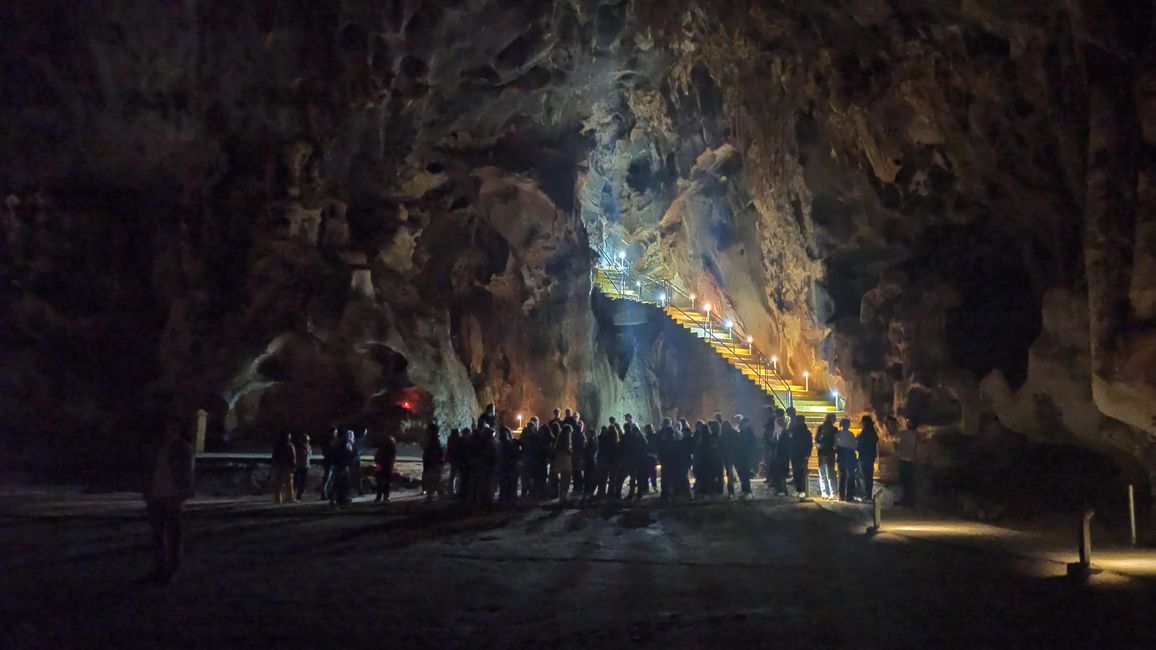
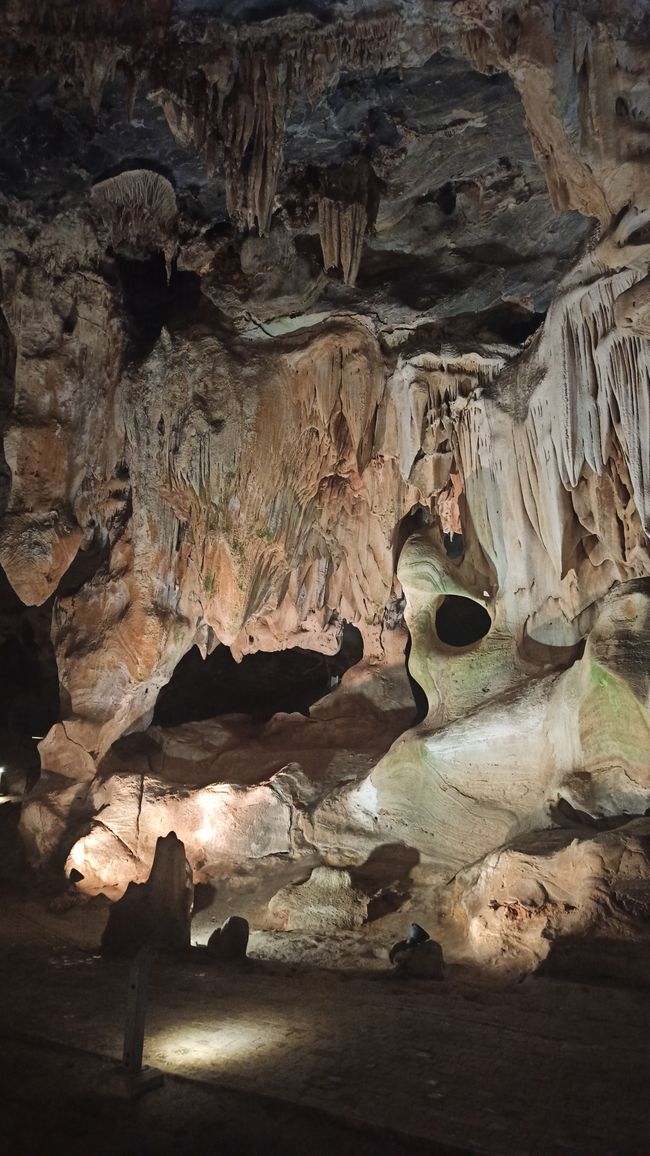
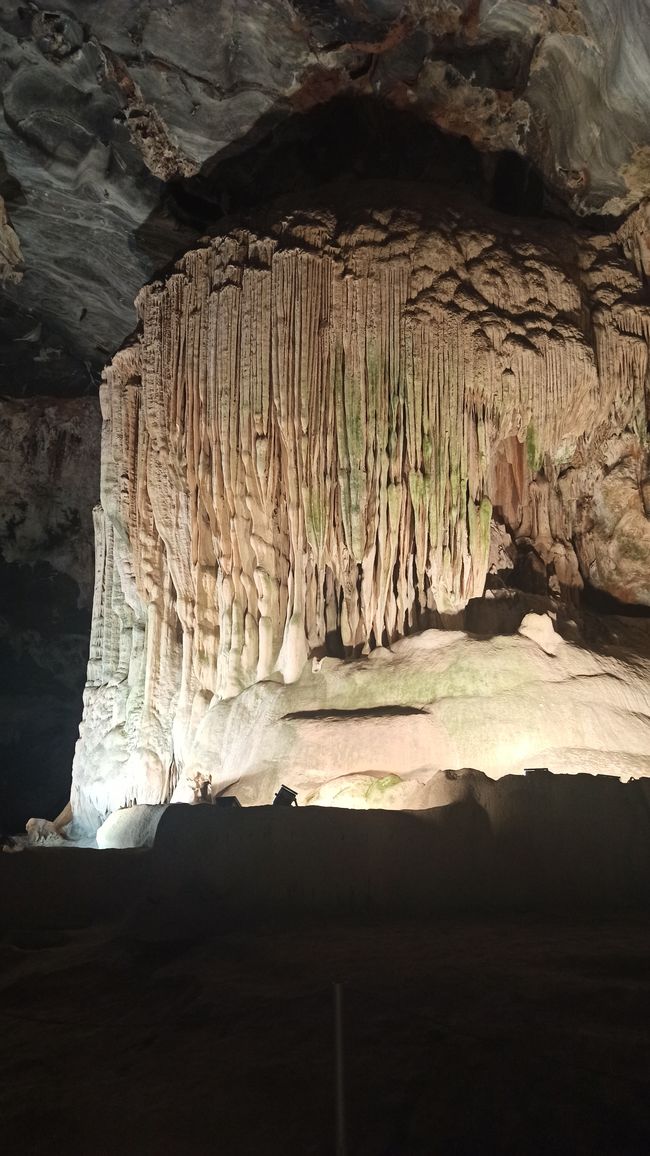
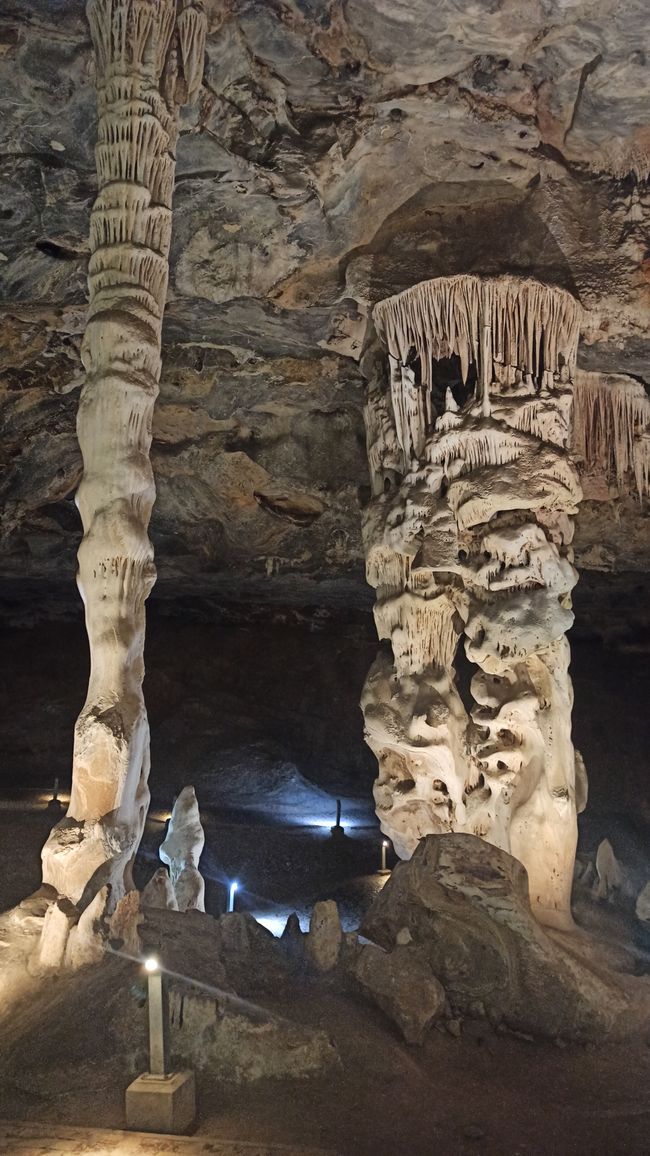
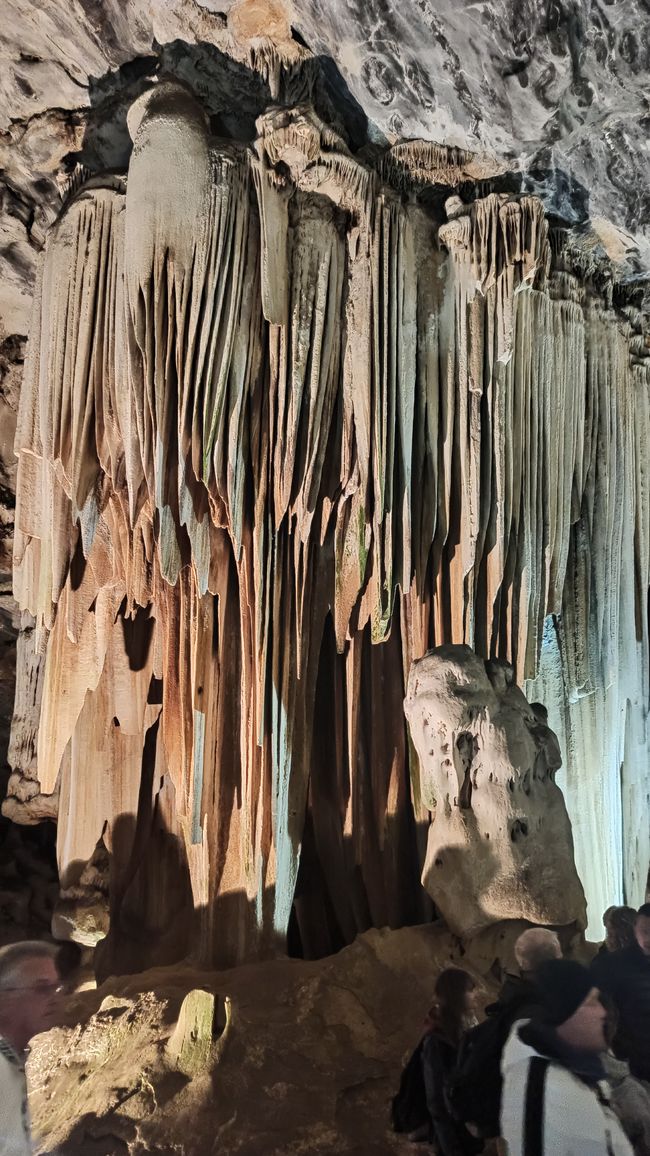

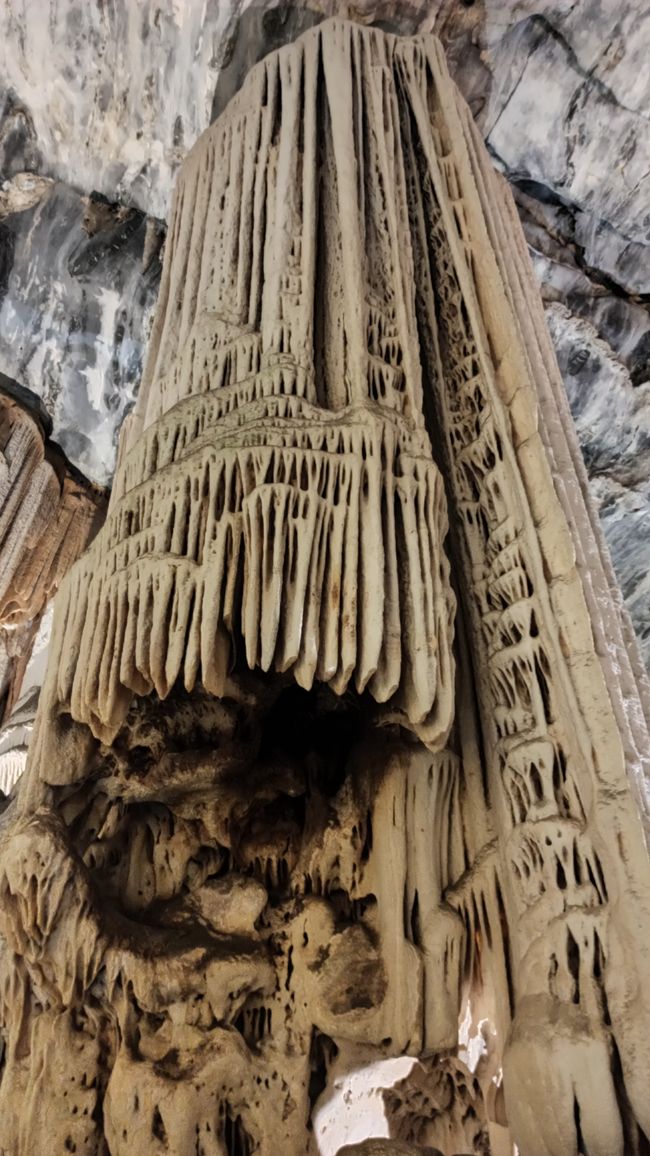
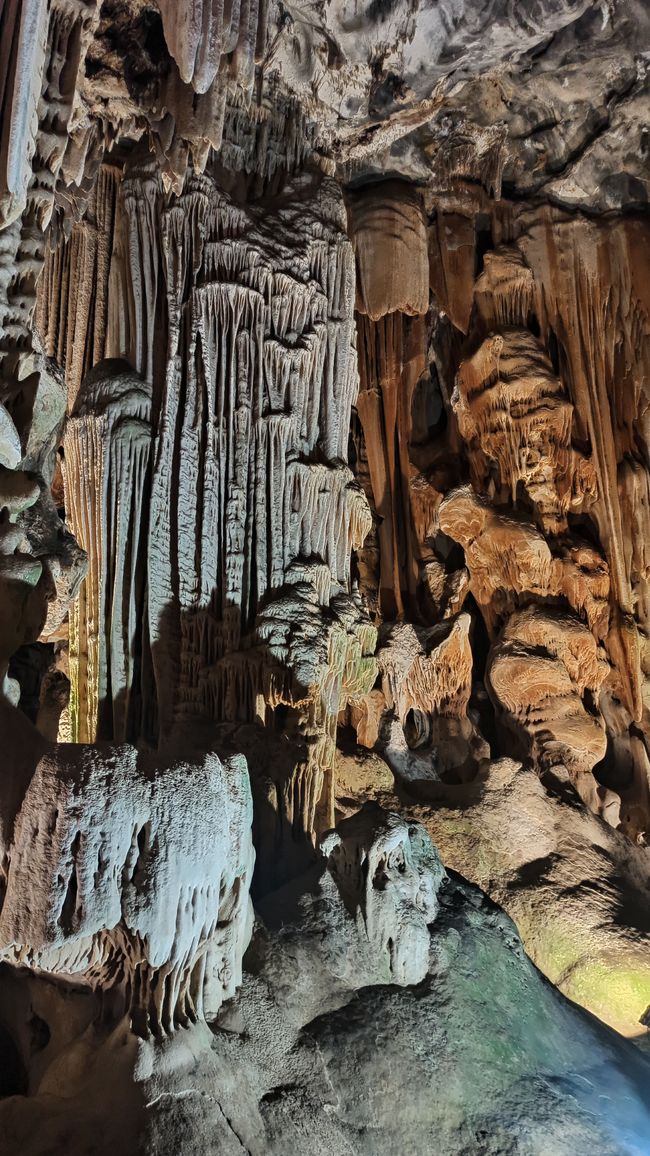
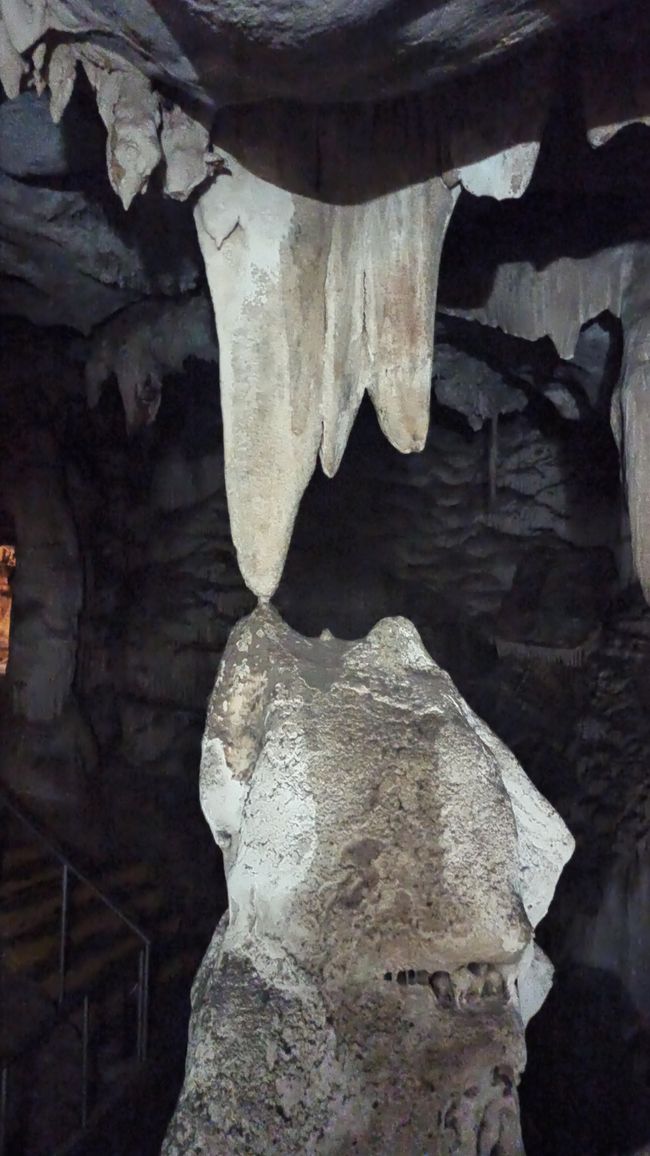
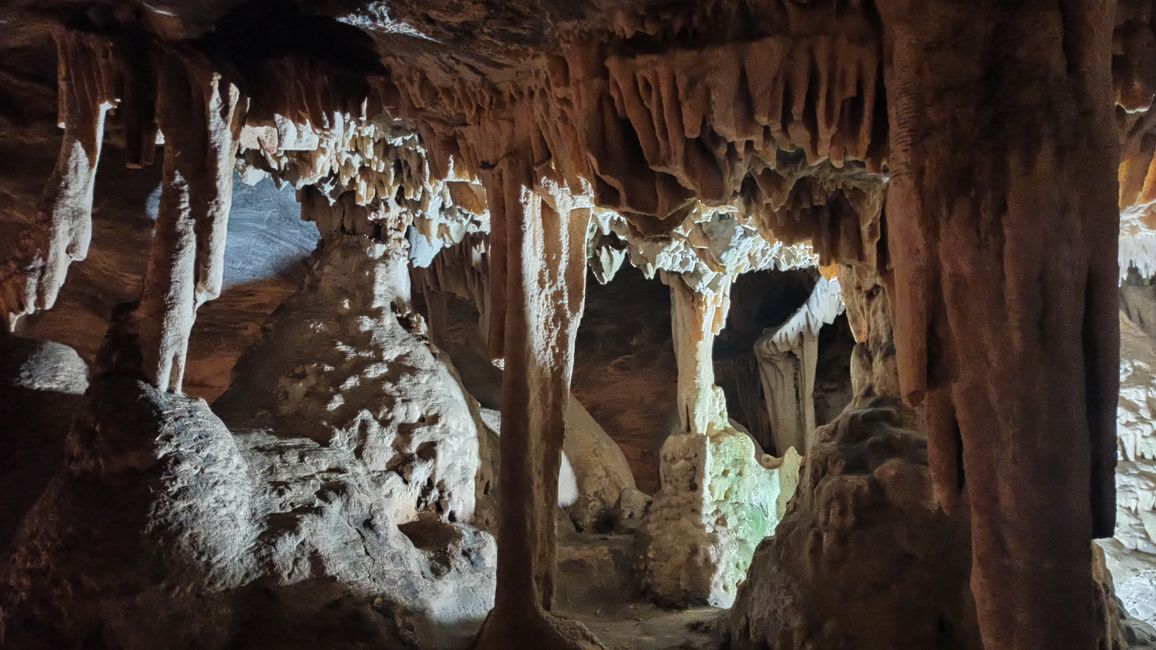
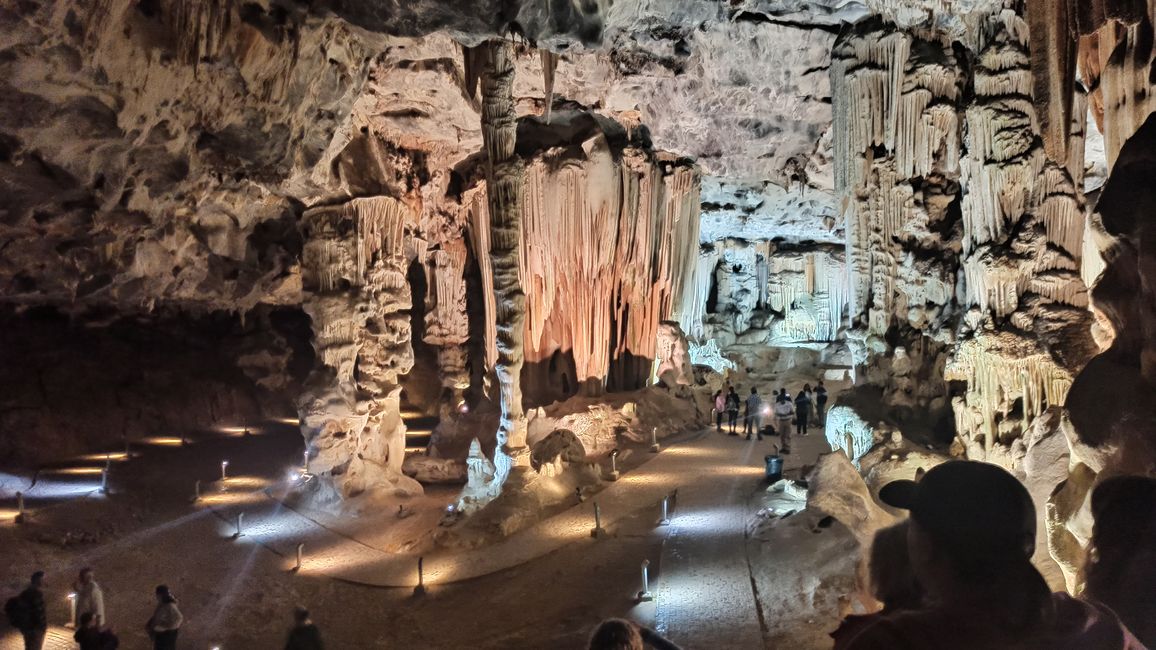
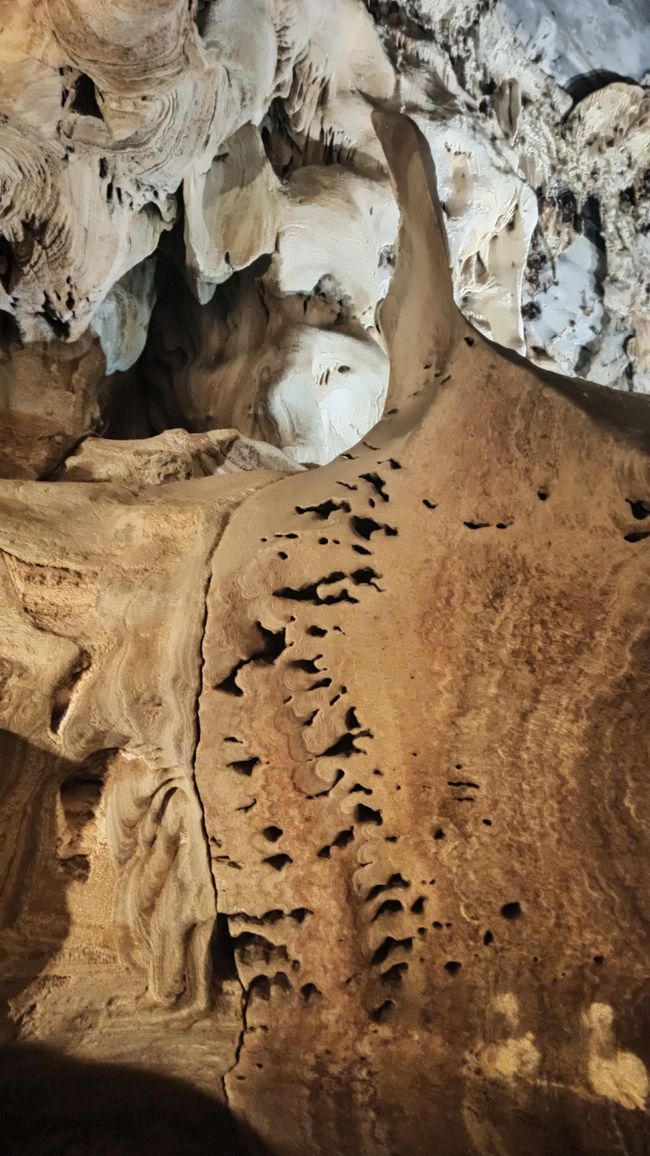


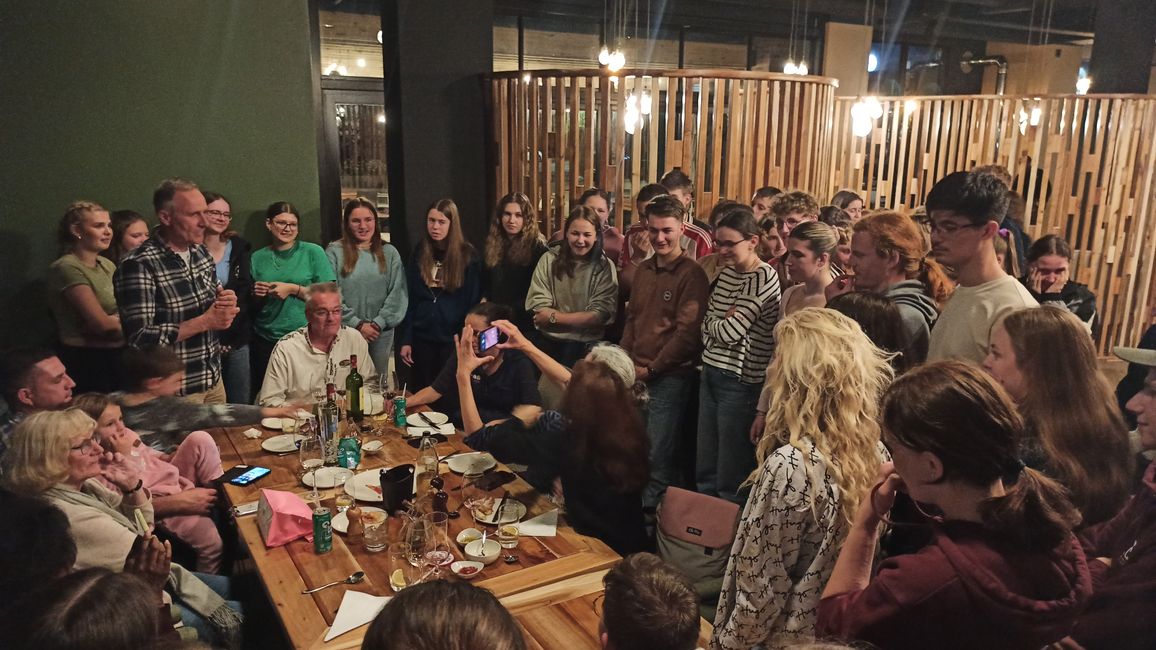
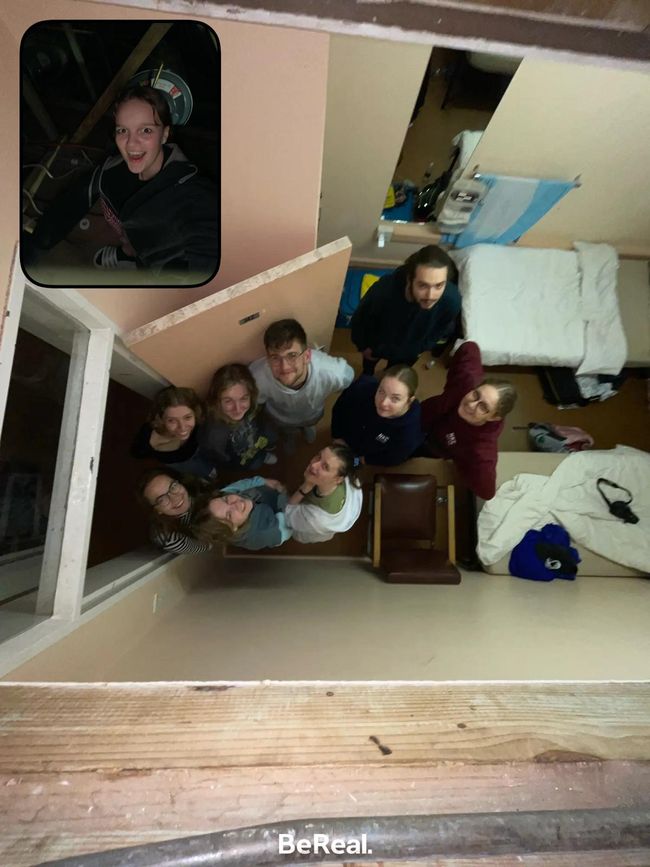
Mag-subscribe sa Newsletter
Originally, a very nice concert was planned for this evening in Oudtshoorn. Unfortunately, the organizing community of the concert canceled it immediately before our departure to South Africa. But instead of being upset, we wanted to use this day to further explore South Africa. After some of us were involuntarily woken up early due to a water damage that occurred in the morning hours, we set off at 9:30 am after breakfast, passing through George and over the Outeniqua Pass towards Oudtshoorn to an ostrich farm.
George is located along the Garden Route and with a population of about 160,000, it is one of the largest cities in the Western Cape province. It is an important industrial city and has a university. George's state hospital has been awarded as the best hospital in South Africa for over ten years. George is extremely popular with golfers and the city has South Africa's third oldest golf course. The city is located at the foot of the Outeniqua Mountains. The landscape there is called the Little Karoo, which means 'Dry Land without Water'. On hot summer days, the temperature here can reach between 45 and 50 °C, so the vegetation is rather limited.
At 11 am, we reached the ostrich farm. For one hour, we received a guided tour (even in German) of the premises. Right from the beginning, we were able to observe the mighty ostrich eggs up close and even test how durable they are by standing on one. If you want to prepare scrambled eggs from these large eggs, you should plan about 45 minutes. For a fried egg, another hour should be expected, and if you want a hard-boiled egg, you should take your time because it takes about three hours. It takes about 19 hours for a chick to hatch from such an egg, and the parents do not provide any assistance. After three days, the offspring must already be able to keep up with the parents because then the animals leave the nest and move on.
In the travel guide, there was a funny fact about the ostriches and we asked the experts if this was really true. And indeed, if you are attacked by an ostrich, you should play dead. The animal will sit on you for a few minutes, but will already forget the incident after a few minutes and walk away.
Armed with this information, we headed into the enclosures. Of course, not on foot but in a trailer pulled by a tractor. The ostriches were very curious and came close to us. Sometimes a little too close, which made us a bit uneasy. A total of 2000 animals live on the farm. They eat, among other things, lucerne, clover, and eggshells. For a functioning digestion, ostriches also eat stones, so they always have about 1.5 kg of stones in their stomach.
At the beginning of the tour, we saw a male ostrich demonstrating his mating call. The neck swells and a sound comes out of the bird that is difficult to describe. In the fight for females, the male animals often tear out feathers, which is comparable to pulling out a fingernail in terms of pain level.
A female lays between 11 and 18 eggs in a year. The egg is then incubated for 42 days, during which both the females support each other and the males take over the incubation at night, as we had already learned the previous day. The plumage of the young birds only reveals whether it is a brown female or a black male after 14 months. The animals are fully grown at 18 months, but only become sexually mature at four years old. Towards the end of our tour, we were able to admire Madonna, Michael Jackson, and Lady Gaga - three animals that stand out with their strikingly beautiful plumage. After this interesting tour, we had lunch on the farm, where the non-vegetarians were served an ostrich steak, which everyone enjoyed very much.
At around 1:15 pm, we set off again, this time towards the Cango Caves, which we reached about three-quarters of an hour later. There, we received a guided tour in German for over an hour from the enchanting Lee Ann. The cave system of the Cango Caves extends over 5.3 km, of which 1.2 km are accessible to the public. Right after the entrance, we entered a small hall. According to Lee Ann, the Bushmen lived here 80,000 years ago, but unfortunately, all the wall paintings they left behind are no longer visible.
Going further along the passage and down some stairs, we then arrived at the Great Hall, which was incredibly impressive. It was discovered on July 11, 1780. Lee Ann turned off the main lighting to demonstrate how little the cave explorer could see back then with his small oil lamp. After the hall had been cleared of earth, clay, and stones, and revealed in its full size, it was used as a concert hall for classical music from 1964 to 1994. We could still see the stage and the steps for the choir. However, after 30 years, this event was discontinued because the audience regularly broke off stalactites and stalagmites to take them home. The largest stalagmite in the cave is also located in the Great Hall. It is 160,000 years old and stands 7 m tall. If you add the over four meters of accumulated clay floor, 'Cleopatra's Needle,' as the stalagmite is also called, has an impressive total height of 11 m.
Lee Ann demonstrated the wonderful acoustics of the Great Hall and sang a song for us. Definitely a goosebump moment, as Lee Ann had an enchanting voice and filled this huge hall completely with her singing. But of course, we also participated and sang Witness, Ave verum, and Komm süßer Tod.
Then we continued to the second hall, which was discovered 12 years later in 1792. The reason for this was that the entire cave system was filled with clay, and the researchers had to dig through it. Actually, the discoverers of the second hall did not enter the hall through the path we took, but through a 23 m long tunnel that was only 70 cm high. Just before Hall Two, there are two stalagnates, which are the fusion of stalagmite and stalactite. The 'younger' stalagnate, which is 270,000 years old, is 12 m high and is called 'The Leaning Tower of Pisa.' The stalagnate next to it, which is 500,000 years old, is even a double stalagnate, formed from two fused stalagnates. In addition to these two, we could also admire the 'Stone Willow Tree,' which is 1.5 million years old and consists of many fused stalactites. Opposite Hall 2, 'Neuschwanstein Castle' also rises at the edge of the path :)
Another hall displayed a four-poster bed made up of 14 bedposts. At the four-poster bed, the broken stalactites taken by visitors could be seen very well, as the cave used to be freely accessible without guided tours and people took souvenirs with them.
Our tour ended after 600 m in the 'South African Drum Chamber'. There, rock was growing, which turned out to be a very effective drum, and from which Lee Ann skillfully produced rhythms and sang one last time for us.
On the way back, we sang Indodana again in the Great Hall before leaving the Cango Caves and heading back to George.
It quickly became dark and in dense fog, it was a very adventurous drive through the Outeniqua Mountains. But Massa safely guided us through every curve and dropped us off at a pizzeria after about 90 minutes of driving, where we spent the evening and comfortably ended the day.
Mag-subscribe sa Newsletter
Sagot

Mga ulat sa paglalakbay Timog Africa
